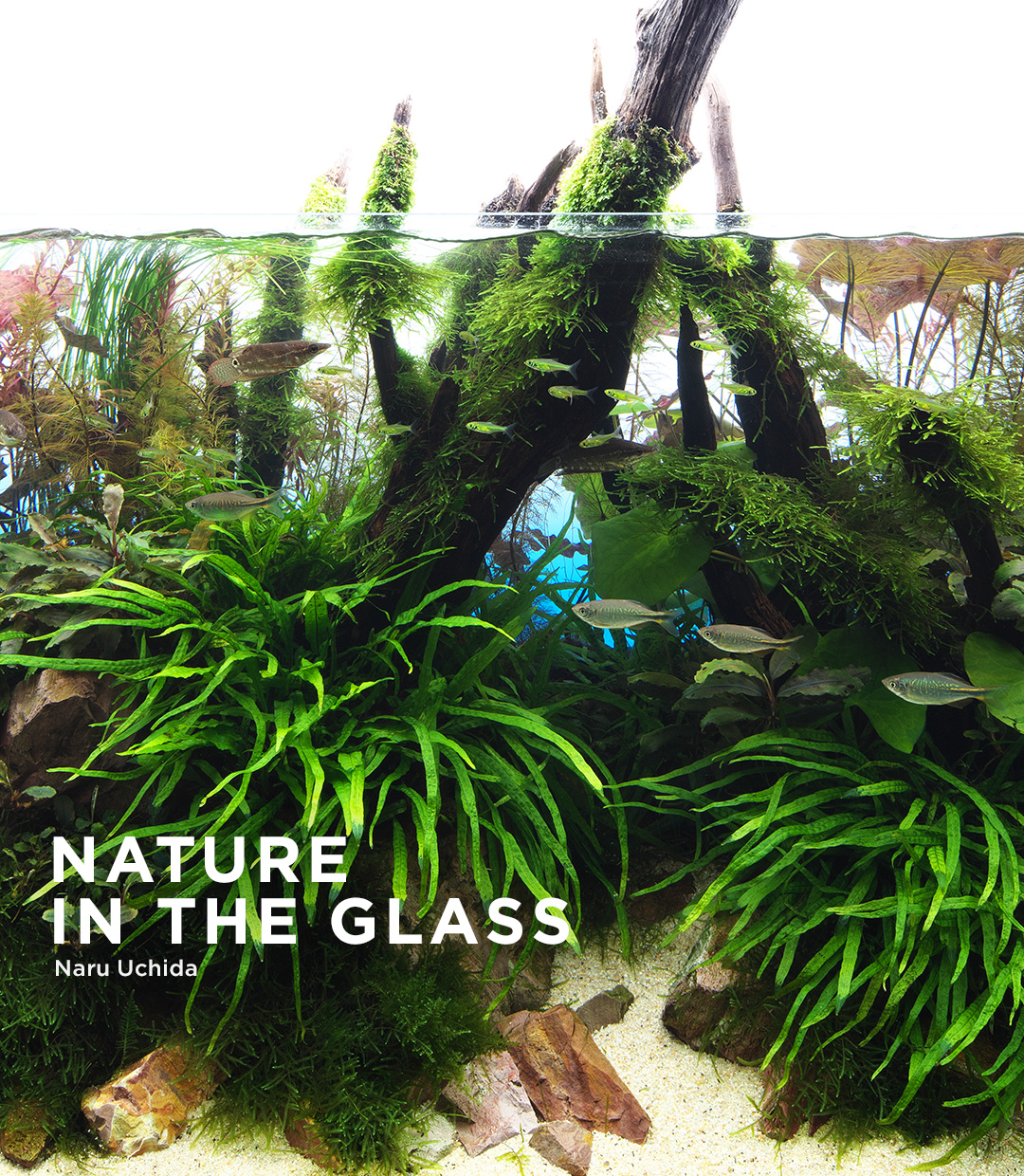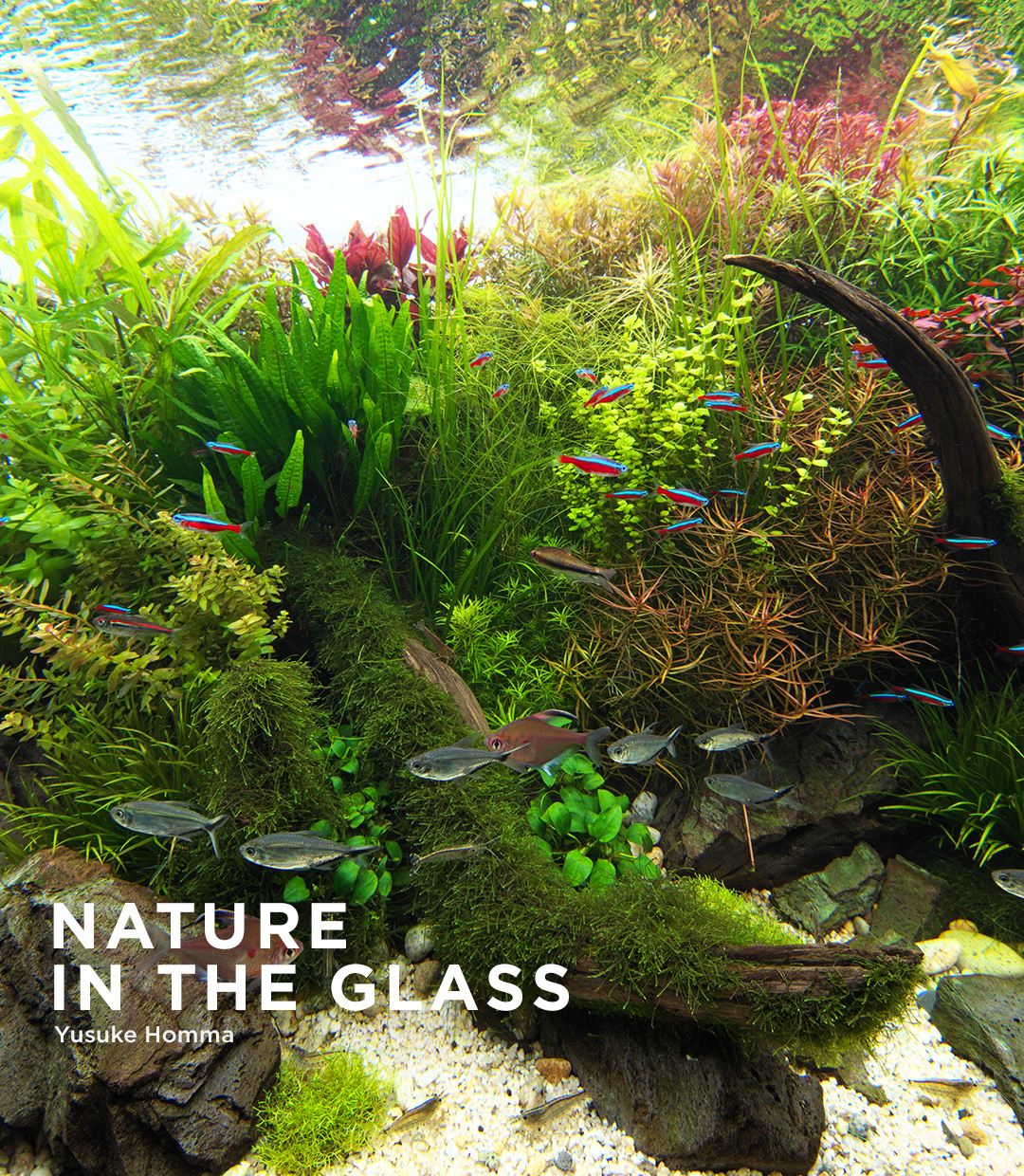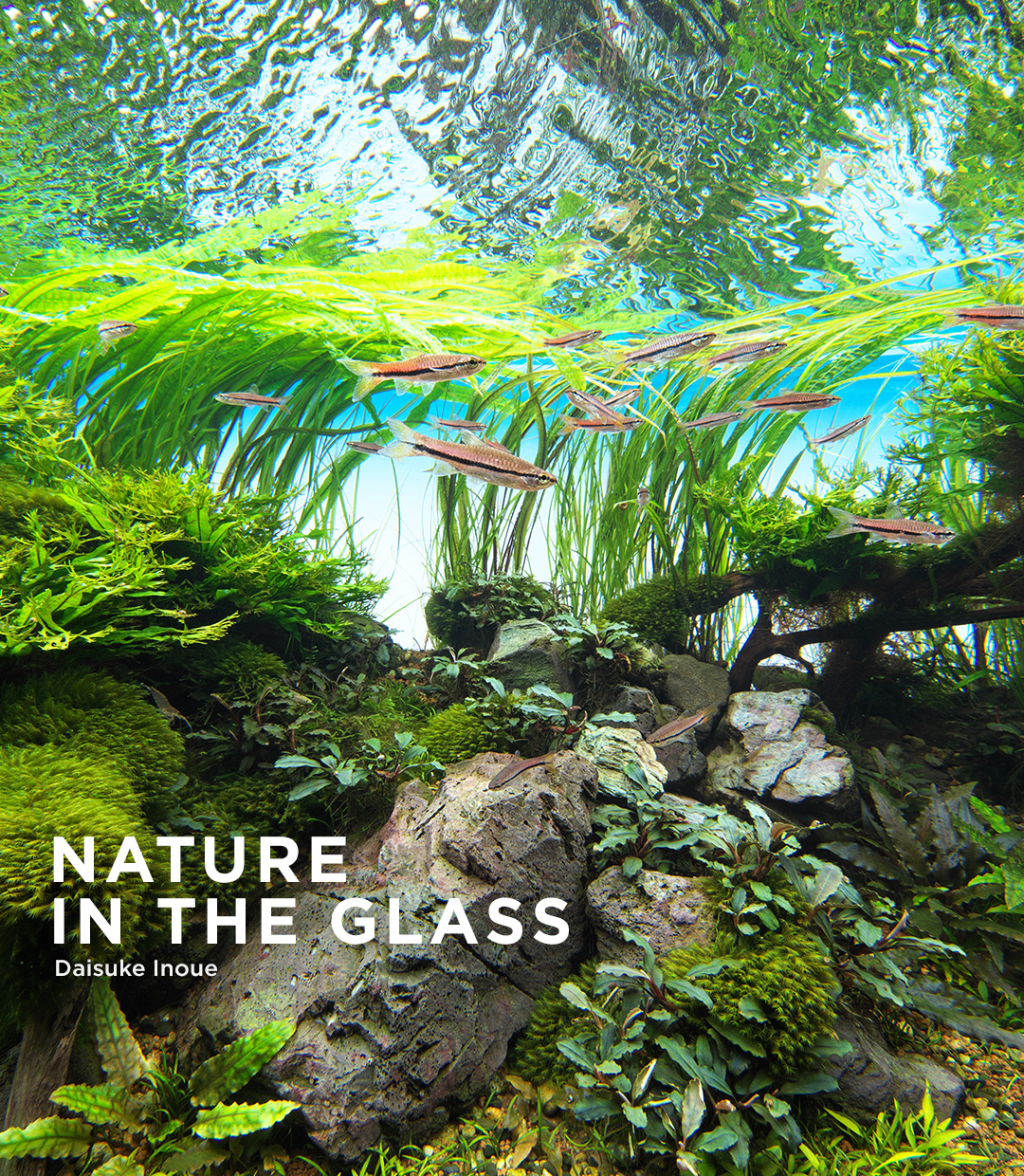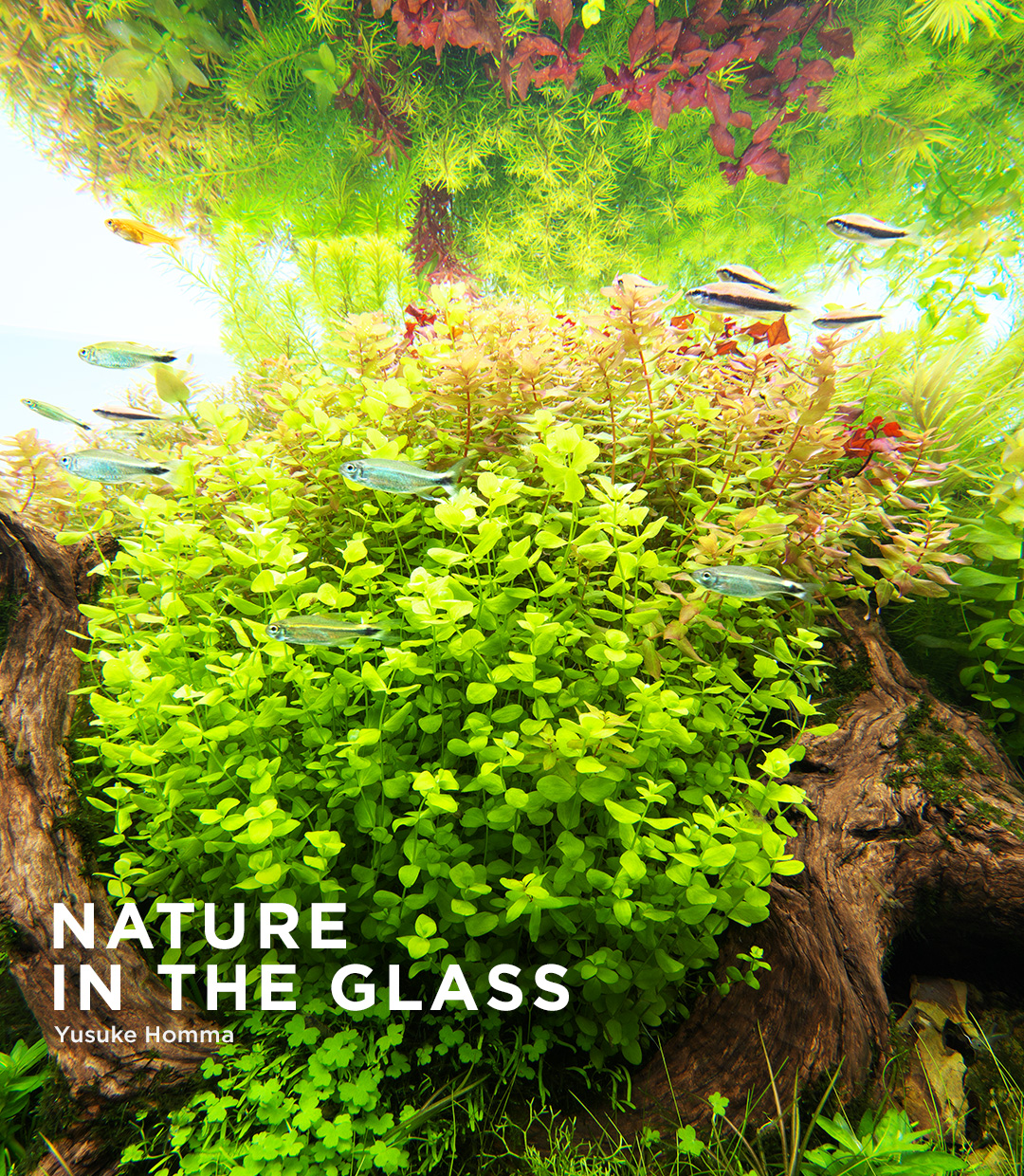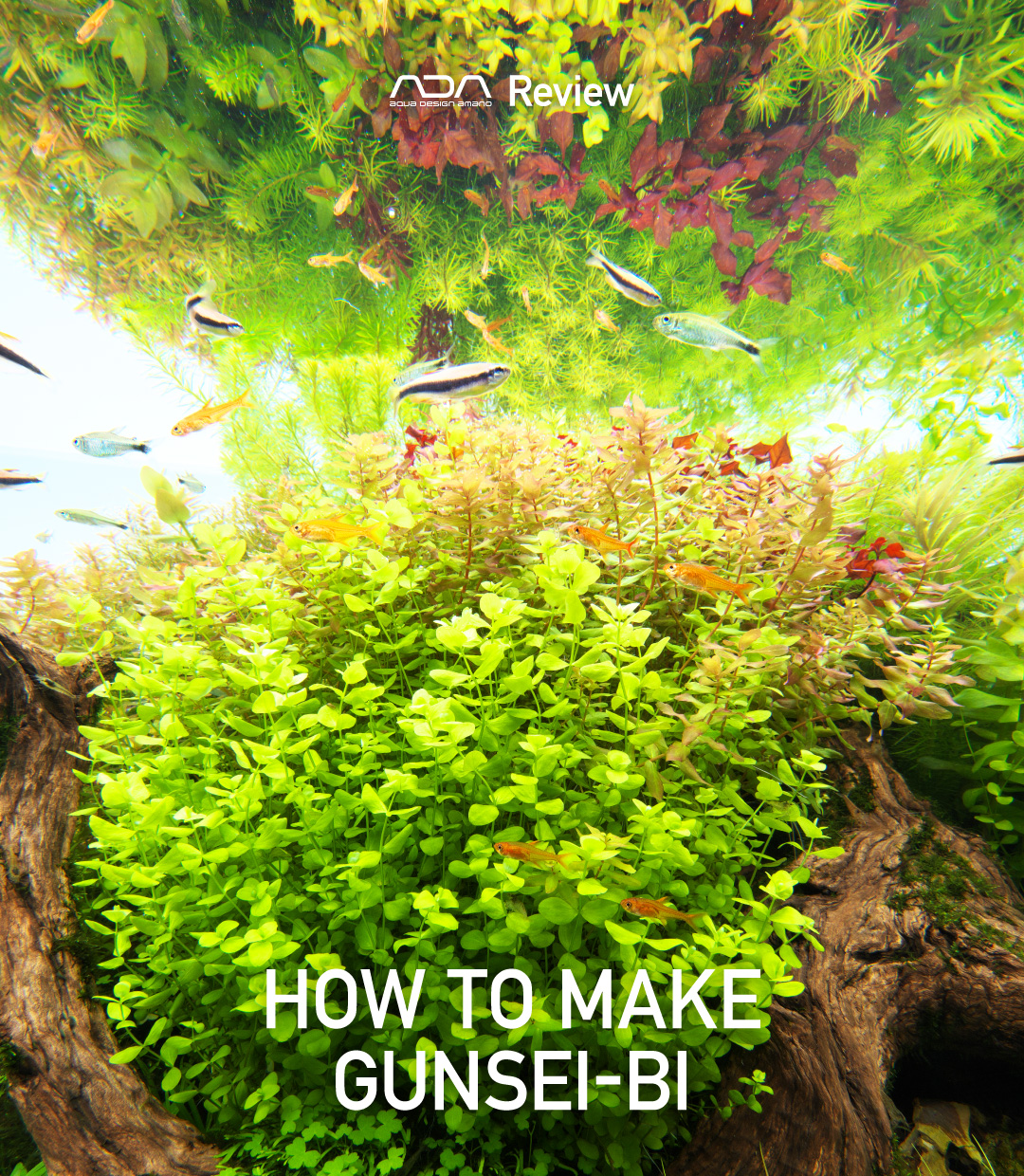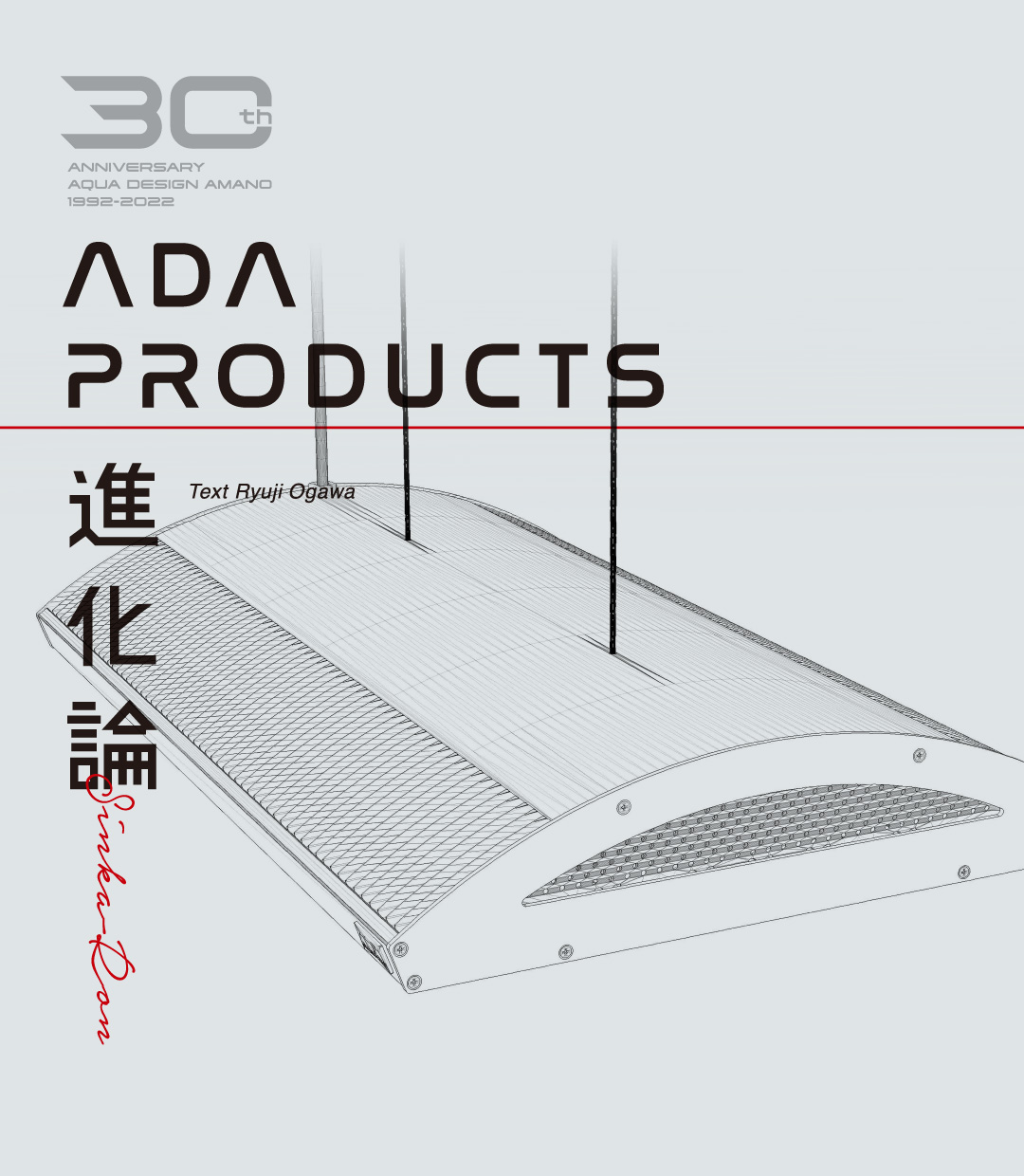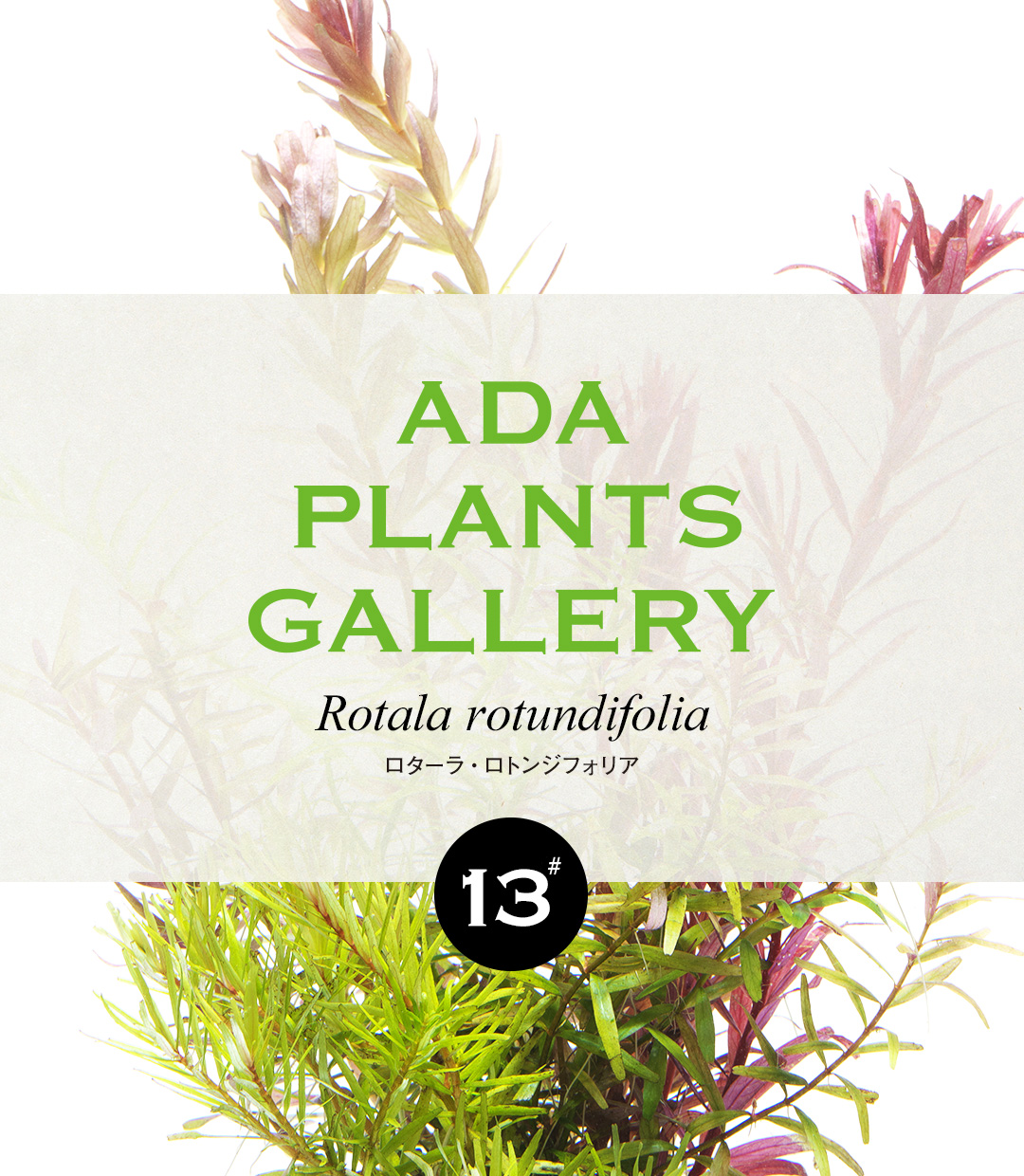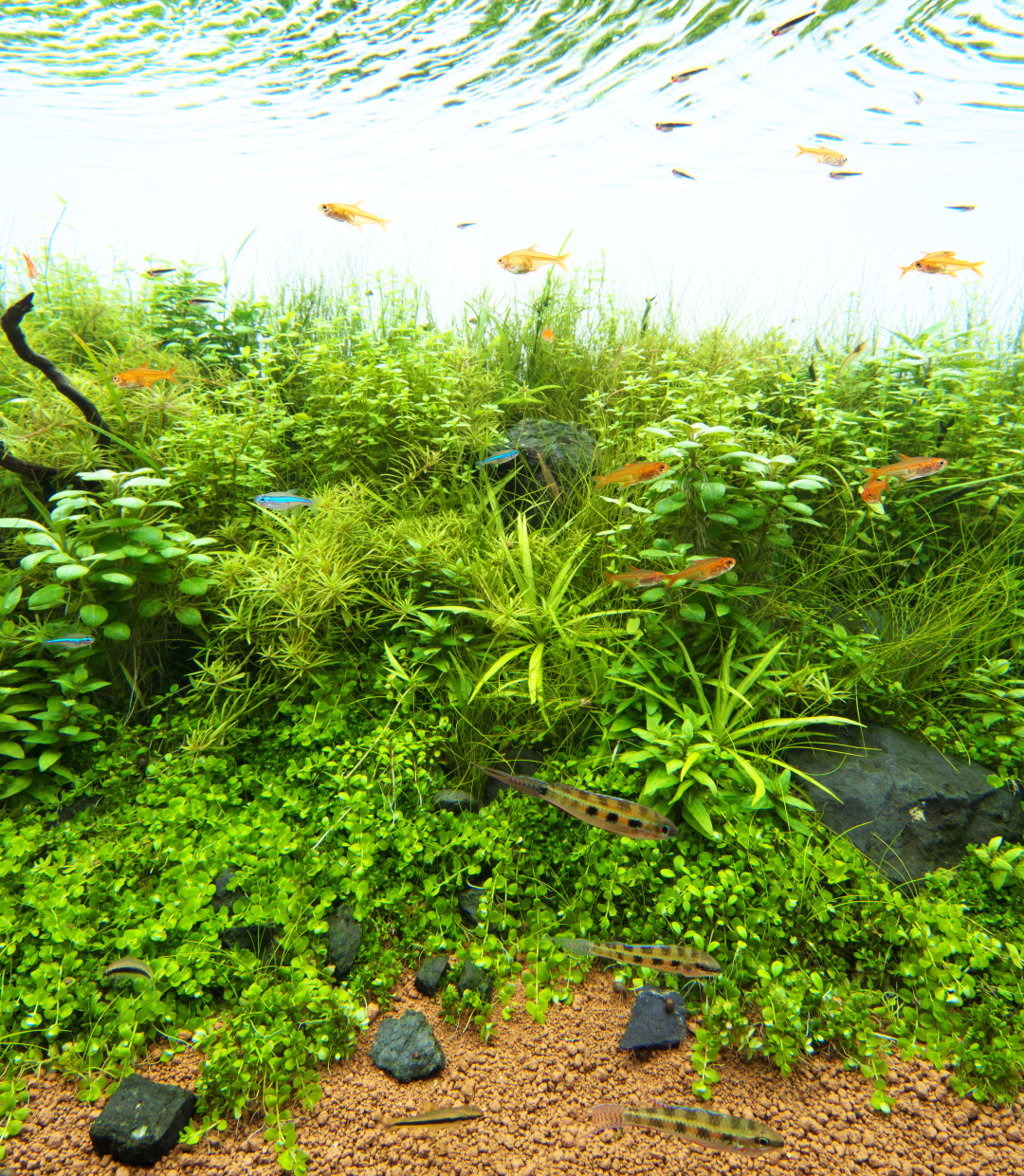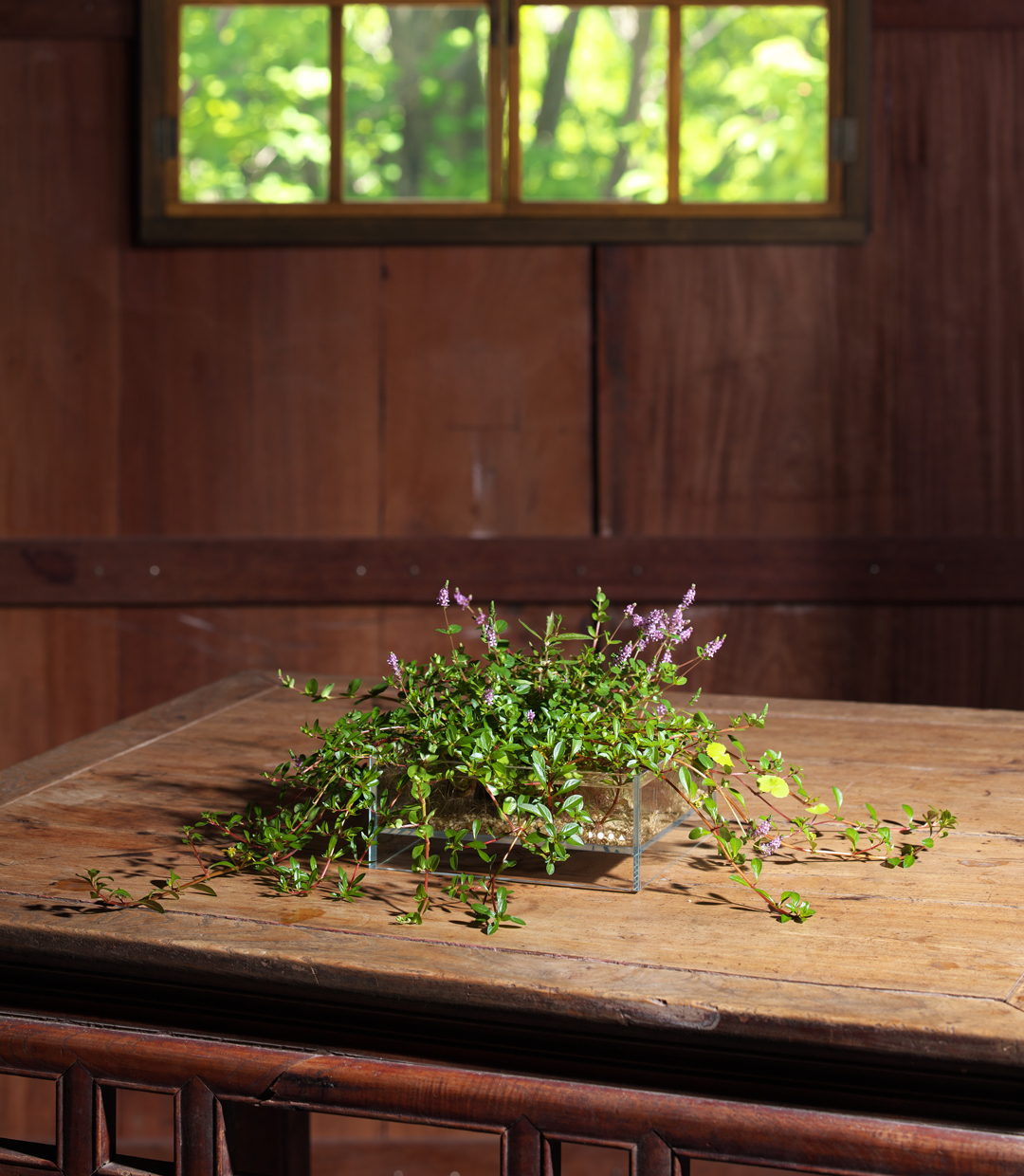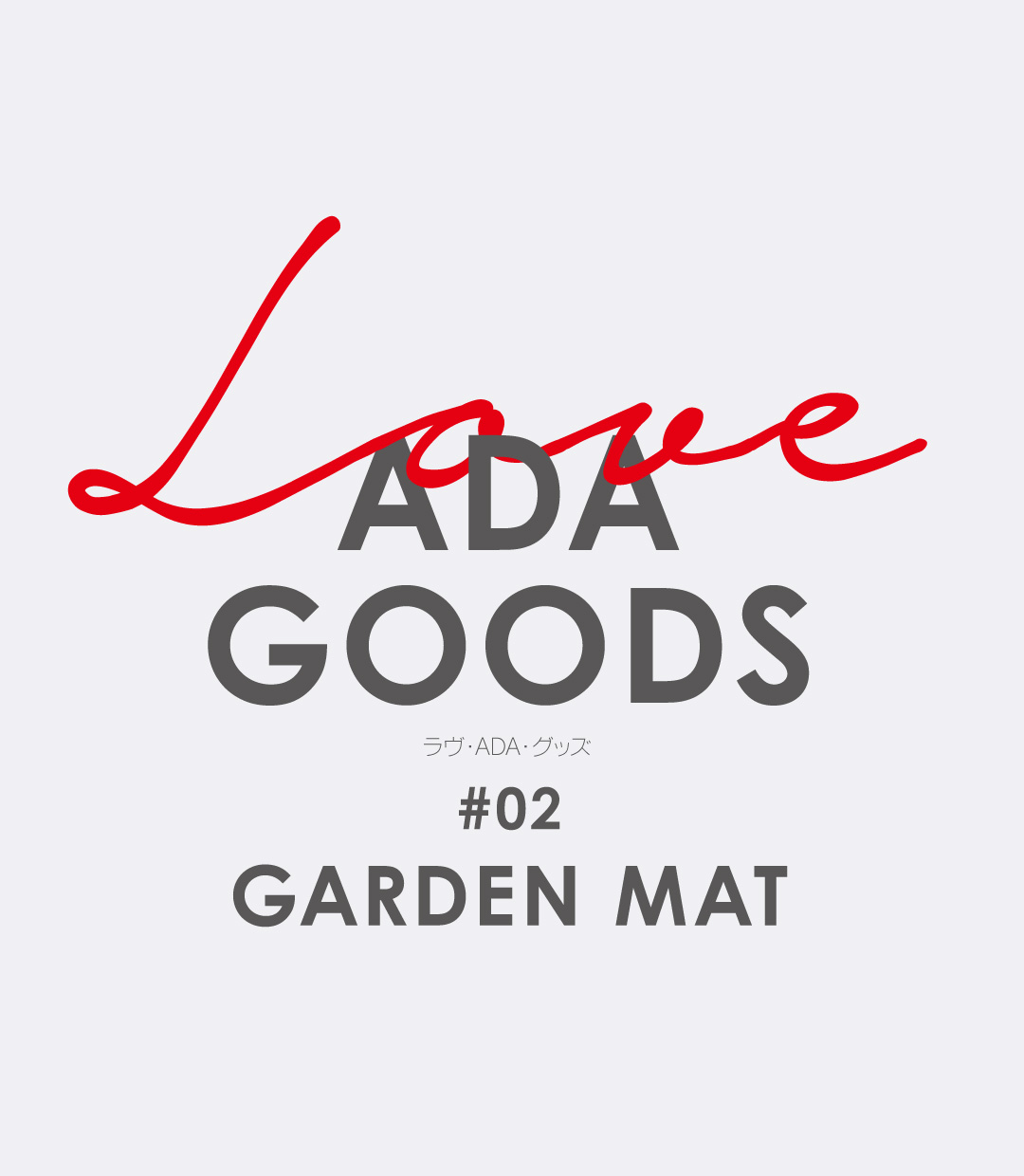NATURE IN THE GLASS “Balmy Spring Breeze”
[Balmy Spring Breeze]
Inspired by the landscape of trees and plants gathered together to form a community, the theme was to express the long passage of time of the formation of the community and the vitality and beauty of the mixed plants. The main plants are stem plants in light colors that are familiar in Nature Aquarium, evoking the image of a freshly green mountain range. Driftwood pieces were simply placed to accentuate the beauty of the plant clusters. Ohko Stones were placed in a way that they are hidden by the undergrowth to express the passage of time as the plants cover the stones. The goal was to create an aquascape with the gentle softness of thriving aquatic plants and fish swimming happily in a bright, fantastic space.
Inspired by the landscape of trees and plants gathered together to form a community, the theme was to express the long passage of time of the formation of the community and the vitality and beauty of the mixed plants. The main plants are stem plants in light colors that are familiar in Nature Aquarium, evoking the image of a freshly green mountain range. Driftwood pieces were simply placed to accentuate the beauty of the plant clusters. Ohko Stones were placed in a way that they are hidden by the undergrowth to express the passage of time as the plants cover the stones. The goal was to create an aquascape with the gentle softness of thriving aquatic plants and fish swimming happily in a bright, fantastic space.
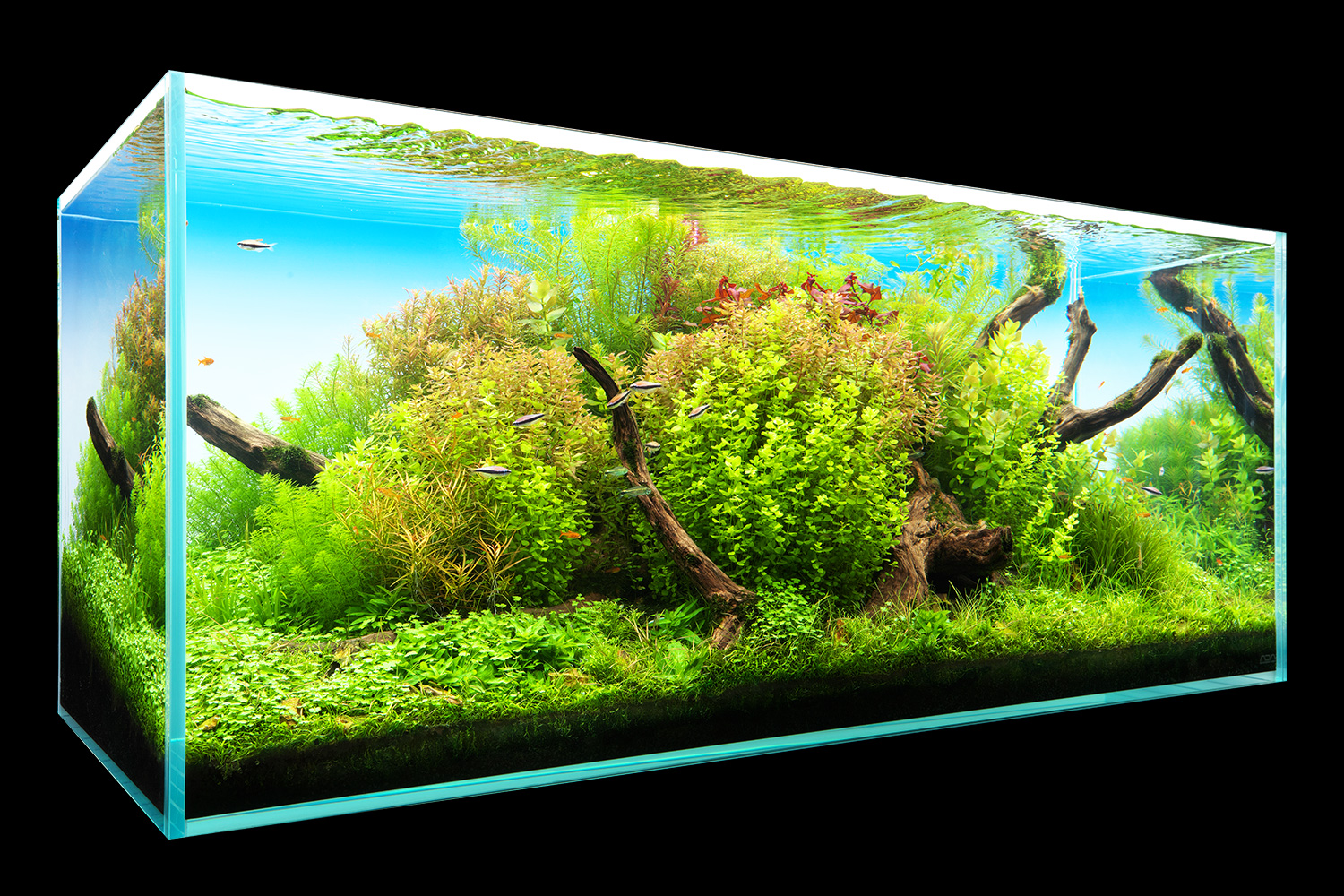
DATA
Photo taken on: September 2, 2022 (ADA)
Creator: Yusuke Homma (layout production, text)
Aquarium: Cube Garden W120 x D50 x H50 (cm)
Lighting: Solar RGB x 2, turned on 8.5 hours per day
Filter: Super Jet Filter ES-1200 (Bio Rio G)
Material: Horn Wood, Ohko Stone
Substrate: Aqua Soil – Amazonia Ver.2, Power Sand Advance M, Bacter 100, Clear Super, Tourmaline BC
CO2: Pollen Glass Beetle 40Ø, 5 bubbles per second via CO2 Beetle Counter (using Tower)
Aeration: 15.5 hours after the light is turned off using Lily Pipe P-6
Additives: Green Brighty Neutral K, Green Brighty Mineral, Green Brighty Iron, Green Brighty Nitrogen, ECA Plus, Green Gain Plus
Water change: 1/3 once a week
Water quality: Temperature 25°C, pH: 6.2, TH: 50 mg/L
Plants:
Myriophyllum matogrossense (BIO)*
Myriophyllum sp. ‘Guyana’ (BIO)*
Ludwigia arcuate (BIO)*
Ludwigia repens ‘Super Red’ (BIO)*
Rotala rotundifolia ‘Ceylon’ (BIO)*
Rotala sp. ‘Hra’ (BIO)*
Rotala rotundifolia (BIO)*
Rotala nanjean (BIO)*
Rotala macrandra ‘Green’ (BIO)*
Rotala sp. ‘Bangladesh’ (BIO)*
Tonina fluviatilis (BIO)*
Eleocharis acicularis (BIO)*
Staurogyne repens (BIO)*
Cryptocoryne wendtii ‘Green’ (BIO)*
Hydrocotyle sp. (BIO)*
Utricularia graminifolia (BIO)*
Helanthium tenellum
Limnophila hippuridoides
Bacopa caroliniana
Potamogeton perfoliatus
Blyxa novoguineensis
Pogostemon deccanensis
Micranthemum unbrosum
Taxiphyllum barbieri (Moss Bag)*
Fish and Invertebrates:
Hyphessobrycon amandae
Inpaichthys kerri
Hemigrammus hyanuary
Crossocheilus oblongus
Otocinclus sp.
Caridina multidentata
* means that they are ADA’s living product lineup.
Photo taken on: September 2, 2022 (ADA)
Creator: Yusuke Homma (layout production, text)
Aquarium: Cube Garden W120 x D50 x H50 (cm)
Lighting: Solar RGB x 2, turned on 8.5 hours per day
Filter: Super Jet Filter ES-1200 (Bio Rio G)
Material: Horn Wood, Ohko Stone
Substrate: Aqua Soil – Amazonia Ver.2, Power Sand Advance M, Bacter 100, Clear Super, Tourmaline BC
CO2: Pollen Glass Beetle 40Ø, 5 bubbles per second via CO2 Beetle Counter (using Tower)
Aeration: 15.5 hours after the light is turned off using Lily Pipe P-6
Additives: Green Brighty Neutral K, Green Brighty Mineral, Green Brighty Iron, Green Brighty Nitrogen, ECA Plus, Green Gain Plus
Water change: 1/3 once a week
Water quality: Temperature 25°C, pH: 6.2, TH: 50 mg/L
Plants:
Myriophyllum matogrossense (BIO)*
Myriophyllum sp. ‘Guyana’ (BIO)*
Ludwigia arcuate (BIO)*
Ludwigia repens ‘Super Red’ (BIO)*
Rotala rotundifolia ‘Ceylon’ (BIO)*
Rotala sp. ‘Hra’ (BIO)*
Rotala rotundifolia (BIO)*
Rotala nanjean (BIO)*
Rotala macrandra ‘Green’ (BIO)*
Rotala sp. ‘Bangladesh’ (BIO)*
Tonina fluviatilis (BIO)*
Eleocharis acicularis (BIO)*
Staurogyne repens (BIO)*
Cryptocoryne wendtii ‘Green’ (BIO)*
Hydrocotyle sp. (BIO)*
Utricularia graminifolia (BIO)*
Helanthium tenellum
Limnophila hippuridoides
Bacopa caroliniana
Potamogeton perfoliatus
Blyxa novoguineensis
Pogostemon deccanensis
Micranthemum unbrosum
Taxiphyllum barbieri (Moss Bag)*
Fish and Invertebrates:
Hyphessobrycon amandae
Inpaichthys kerri
Hemigrammus hyanuary
Crossocheilus oblongus
Otocinclus sp.
Caridina multidentata
* means that they are ADA’s living product lineup.
[Material] Composition structure with Ohko Stone and driftwood
In order to enhance the beauty of the stem plant clusters, the driftwood extending from the central planting area was reduced and placed so that it bulges out to the left and right. This reduces the shadow area and facilitates trimming of the stem plants.
In order to enhance the beauty of the stem plant clusters, the driftwood extending from the central planting area was reduced and placed so that it bulges out to the left and right. This reduces the shadow area and facilitates trimming of the stem plants.
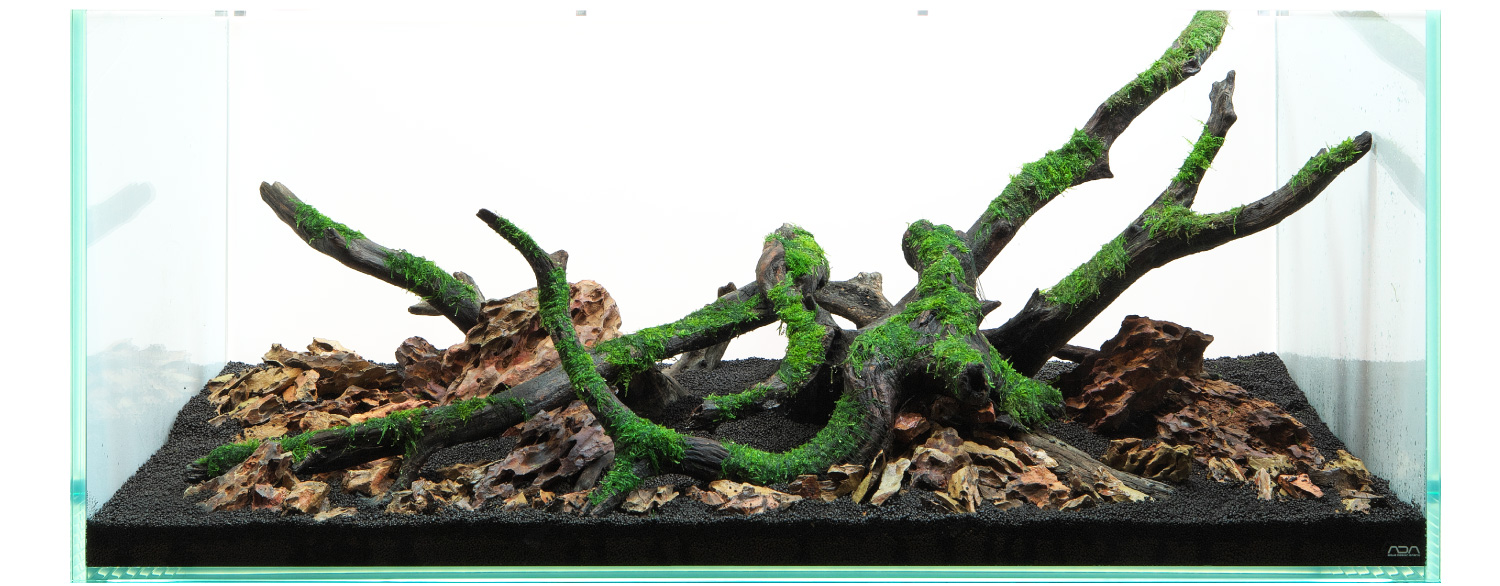
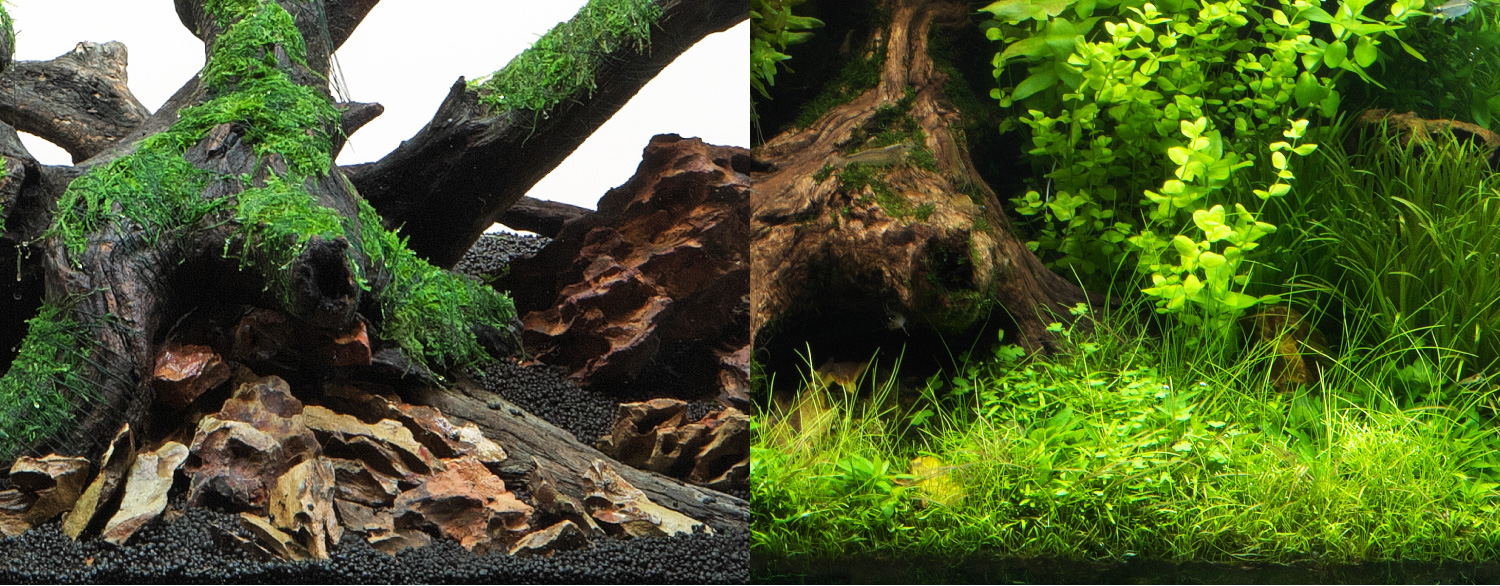
At first glance, the small Ohko Stones were placed randomly, but as the undergrowth grew thicker, they were covered to the point where they were only slightly visible. The intention of expressing the passage of time, as if plants were slowly covering the trees and stones, can be clearly sensed.
[Foreground] Mixed undergrowth focusing on the speed of growth and elongation.
Utricularia graminifolia grows and advances in the substrate, and Hydrocotyle sp. extends its runners over it, creating a well-balanced mixture and natural unevenness. Helanthium tenellum and Eleocharis acicularis were planted at key points to avoid monotony.
Utricularia graminifolia grows and advances in the substrate, and Hydrocotyle sp. extends its runners over it, creating a well-balanced mixture and natural unevenness. Helanthium tenellum and Eleocharis acicularis were planted at key points to avoid monotony.
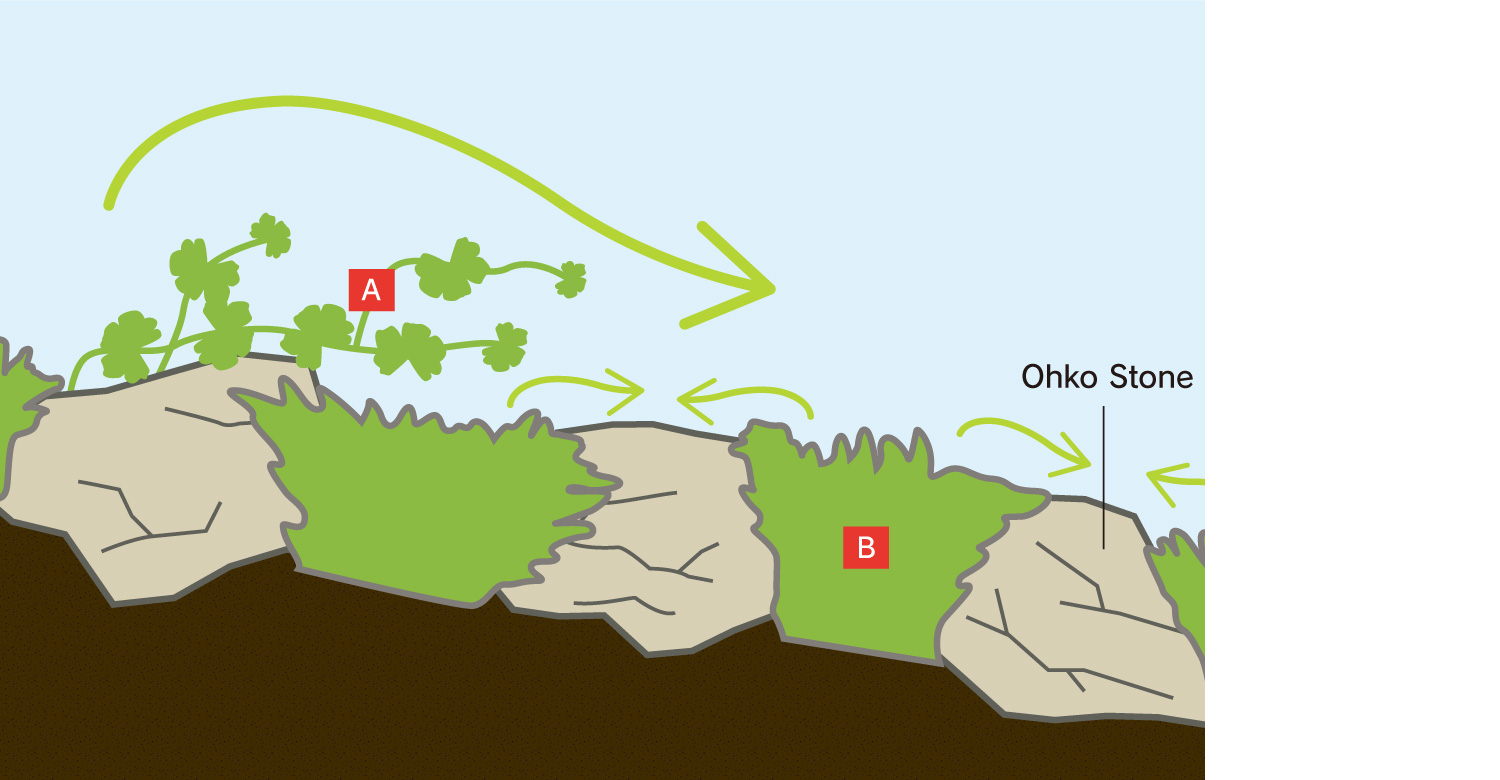
B: Utricularia graminifolia
The two species on the left are resistant to trimming and grow quickly under stable water conditions, making them easy to maintain long term.
[Mid-ground] Keeping the stem plants in the mid-ground compact
In the mid-ground, Micranthemum unbrosum, Ludwigia arcuate and other species that form beautiful clusters by keeping their length short, were densely planted. In order to make the stems less noticeable, the trimming angle should be tilted greatly and the terminal buds should be aligned from the front to the back.
In the mid-ground, Micranthemum unbrosum, Ludwigia arcuate and other species that form beautiful clusters by keeping their length short, were densely planted. In order to make the stems less noticeable, the trimming angle should be tilted greatly and the terminal buds should be aligned from the front to the back.
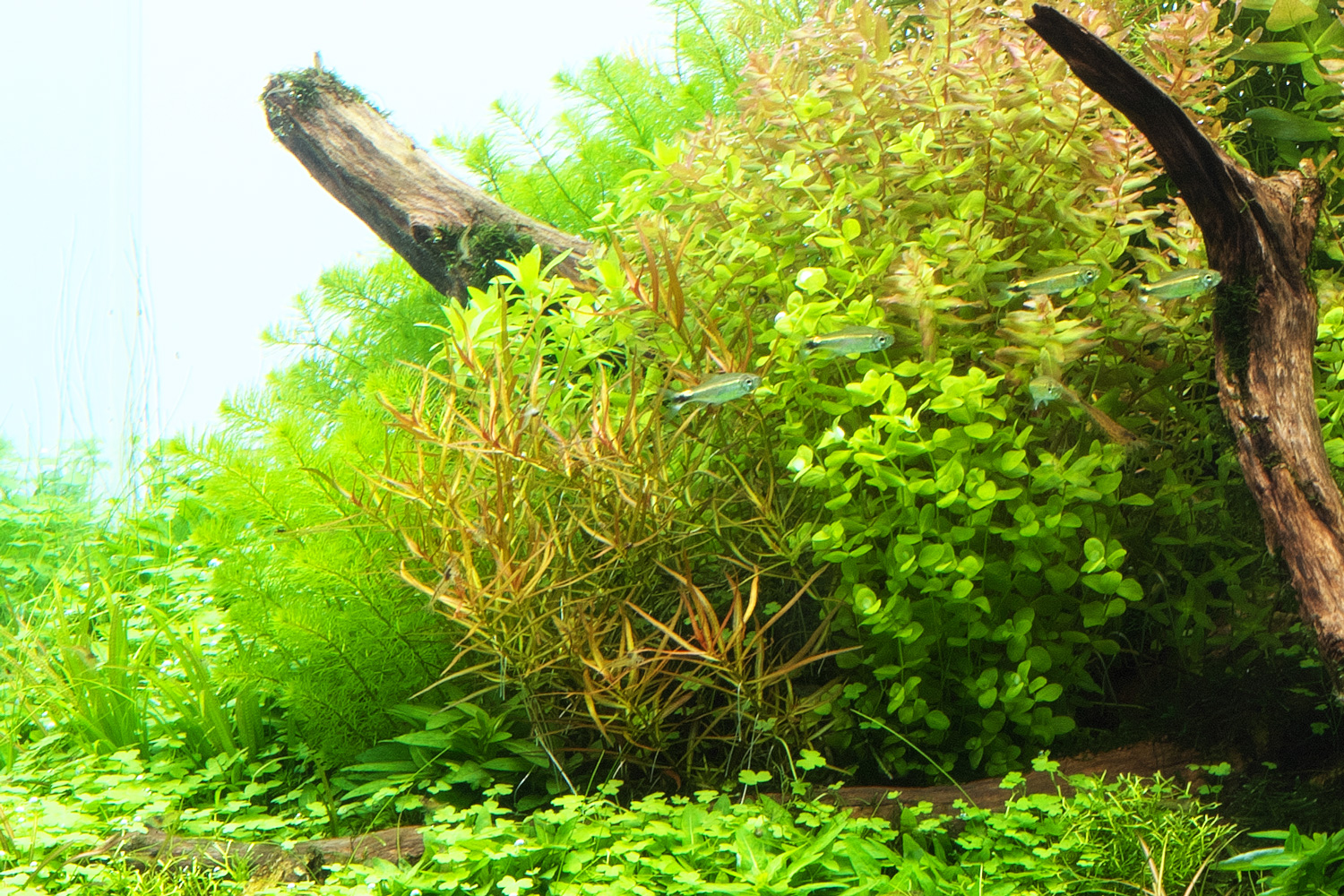
[Maintenance] Trimming according to the degree of growth
Even among stem plants, the speed of growth varies widely. The key to adjusting the differences in the speed of growth is to manage them all at once, from background to mid-ground to foreground, in a single trimming. The beauty of stem plant clusters is created by proper trimming.
Even among stem plants, the speed of growth varies widely. The key to adjusting the differences in the speed of growth is to manage them all at once, from background to mid-ground to foreground, in a single trimming. The beauty of stem plant clusters is created by proper trimming.
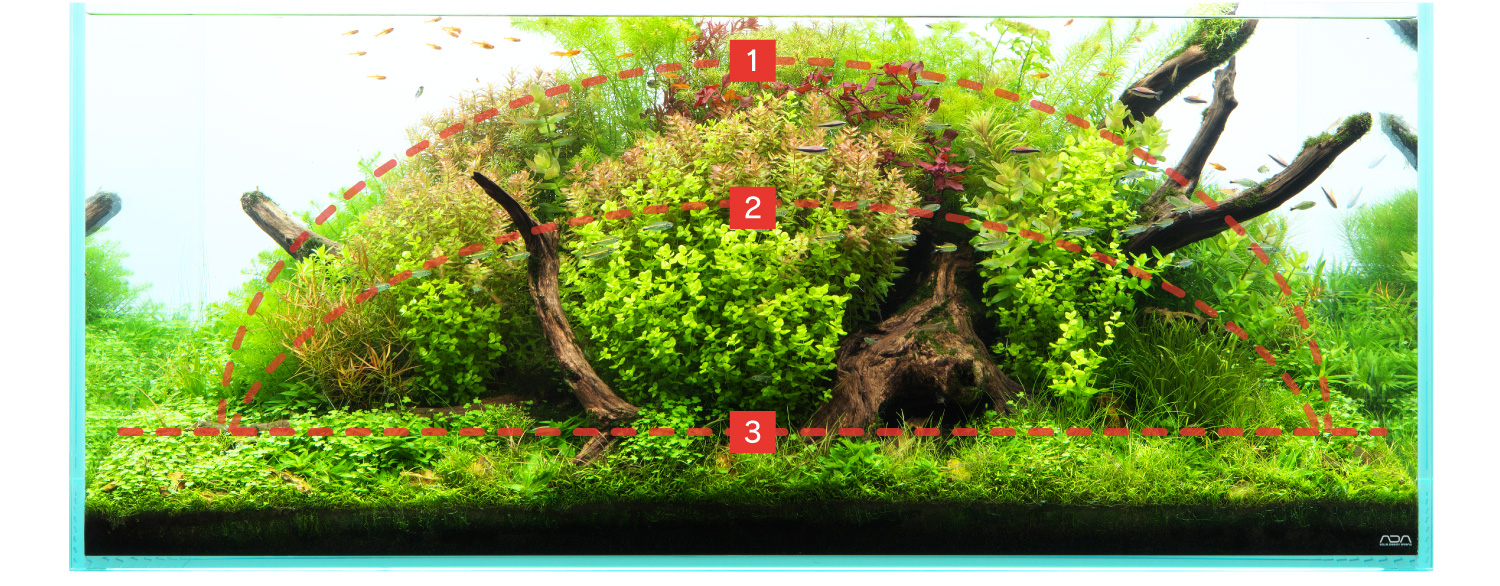
1 The trimming line was determined with the fast-growing Rotala sp. ‘Bangladesh’ and Myriophyllum matogrossense in mind.
2 The plant height was reduced lower than the background trimming line to maintain the volume of the mid-ground.
3 The Utricularia graminifolia was trimmed regularly so that the Ohko Stones would not be buried and balanced with the stem plants.
2 The plant height was reduced lower than the background trimming line to maintain the volume of the mid-ground.
3 The Utricularia graminifolia was trimmed regularly so that the Ohko Stones would not be buried and balanced with the stem plants.
A variety of stem plants adding colors to the aquascape
Stem plants come in a wide range of colors and leaf shapes, and the variety of these variations is appealing. And, above all, the densely growing appearance of these plants directly conveys the explosive vitality of the aquatic plants. In this section, we will introduce some of the stem plants used in the aquascape, based on their characteristics.
Stem plants come in a wide range of colors and leaf shapes, and the variety of these variations is appealing. And, above all, the densely growing appearance of these plants directly conveys the explosive vitality of the aquatic plants. In this section, we will introduce some of the stem plants used in the aquascape, based on their characteristics.
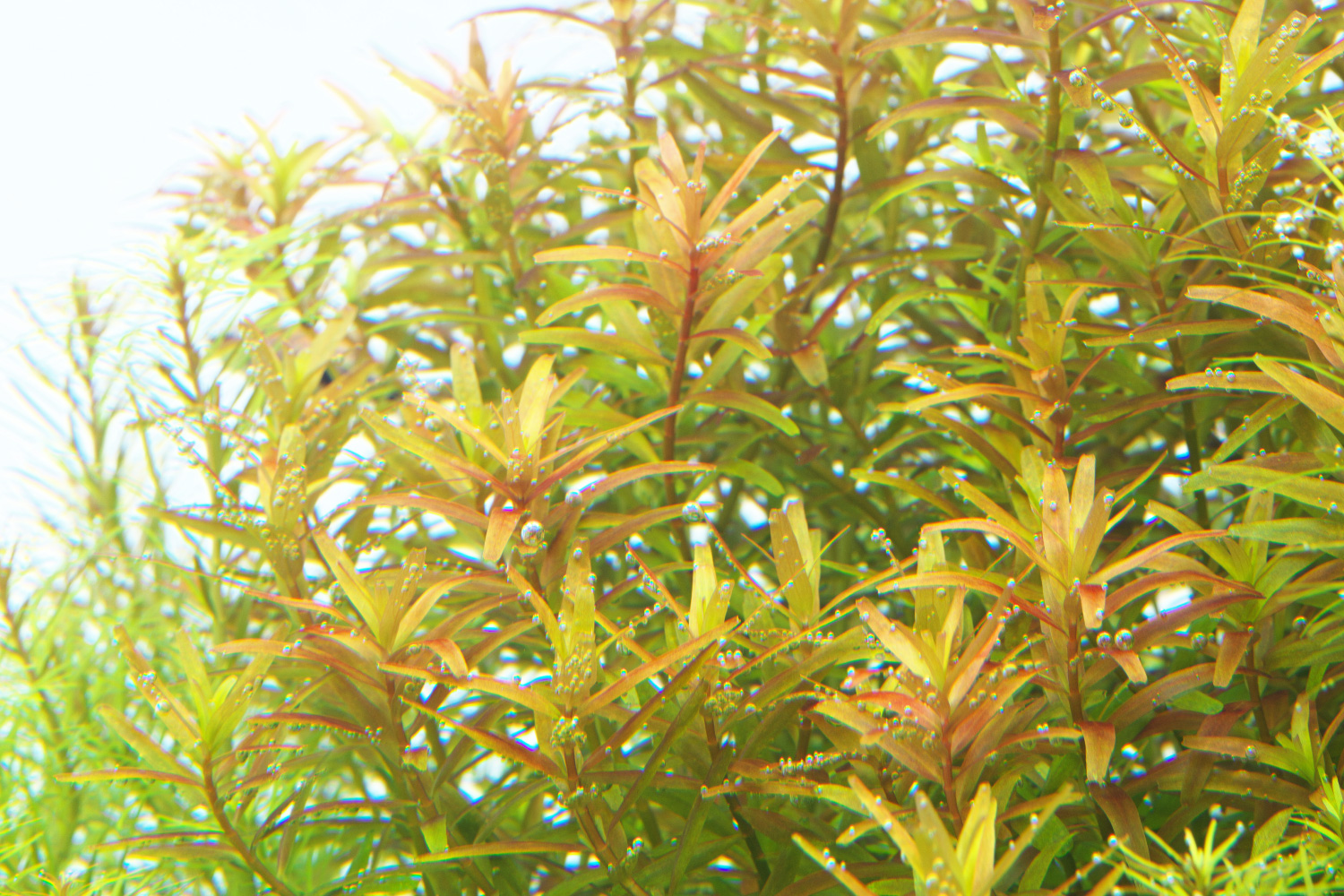
Rotala rotundifolia
Trimming increases density and creates beautiful clusters. Nutrients, including iron, are effective in producing a strong reddish color.
Trimming increases density and creates beautiful clusters. Nutrients, including iron, are effective in producing a strong reddish color.
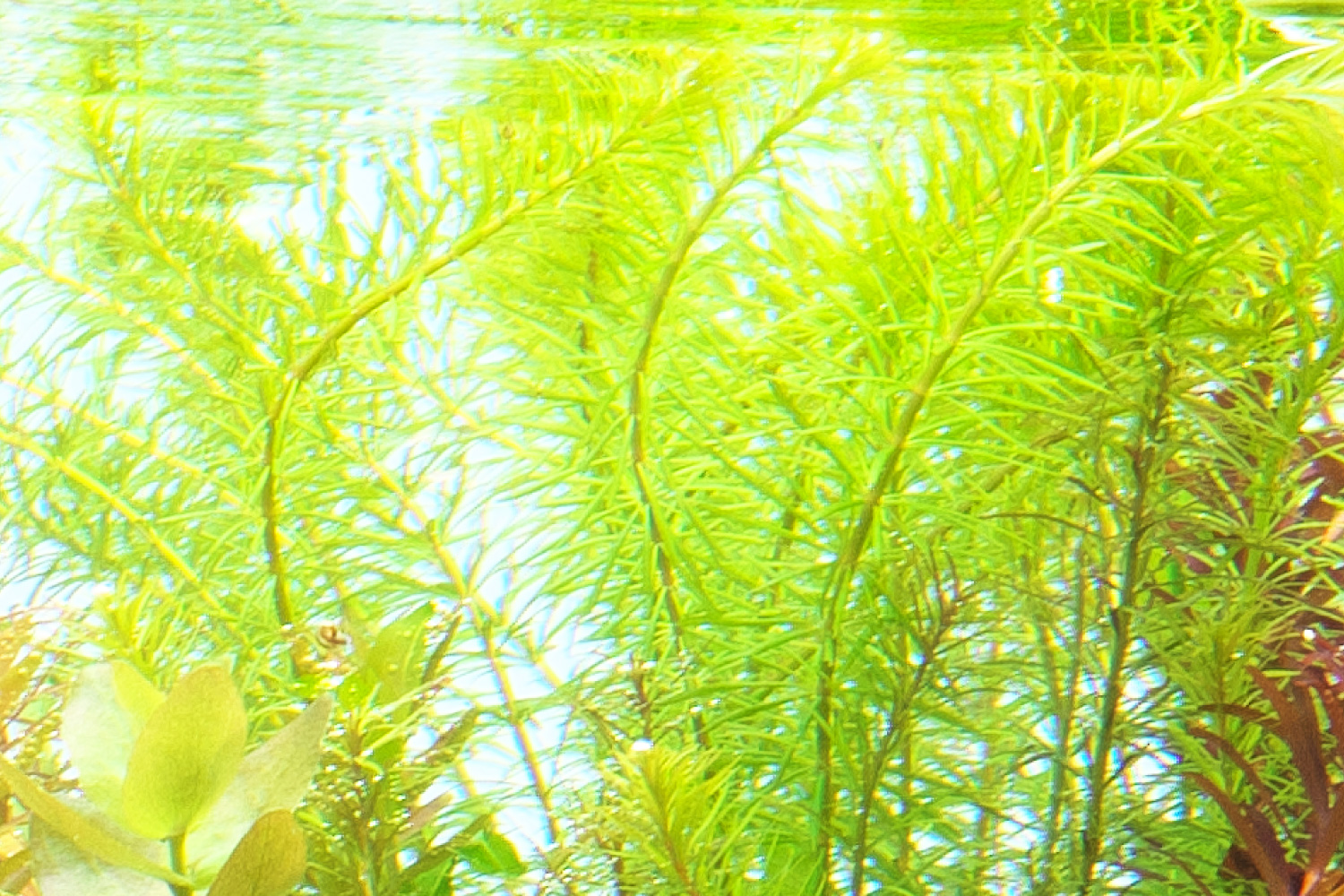
Rotala sp. ‘Bangladesh’
In stable water quality, they show vigorous growth. In this aquascape, the plant was developed as overhangs to express the flow of water.
In stable water quality, they show vigorous growth. In this aquascape, the plant was developed as overhangs to express the flow of water.
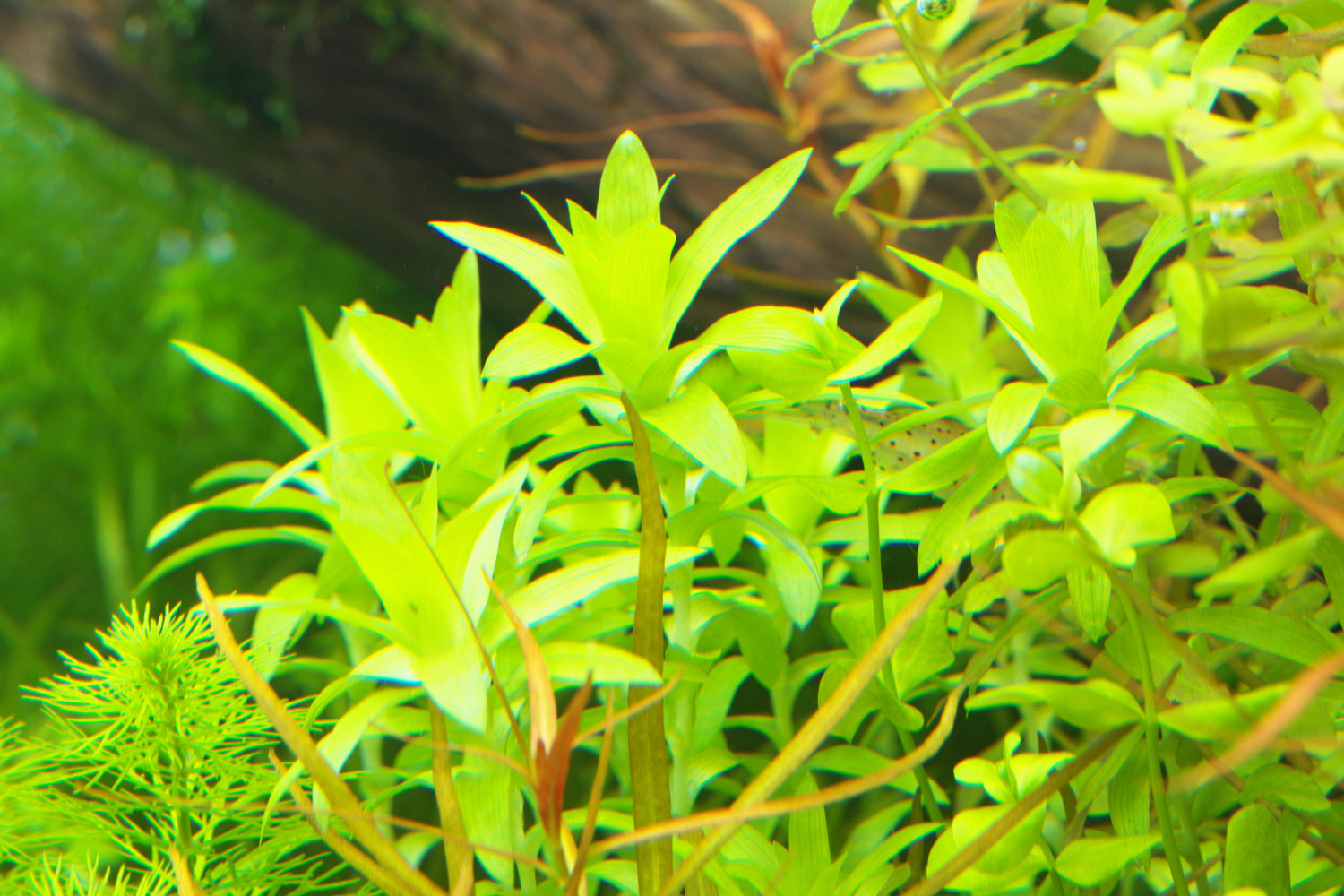
Tonina fluviatilis
The leaves are shaped like stars when viewed from above. The lower stem tends to weaken easily, so it is better to re-plant after it has grown to a certain length.
The leaves are shaped like stars when viewed from above. The lower stem tends to weaken easily, so it is better to re-plant after it has grown to a certain length.
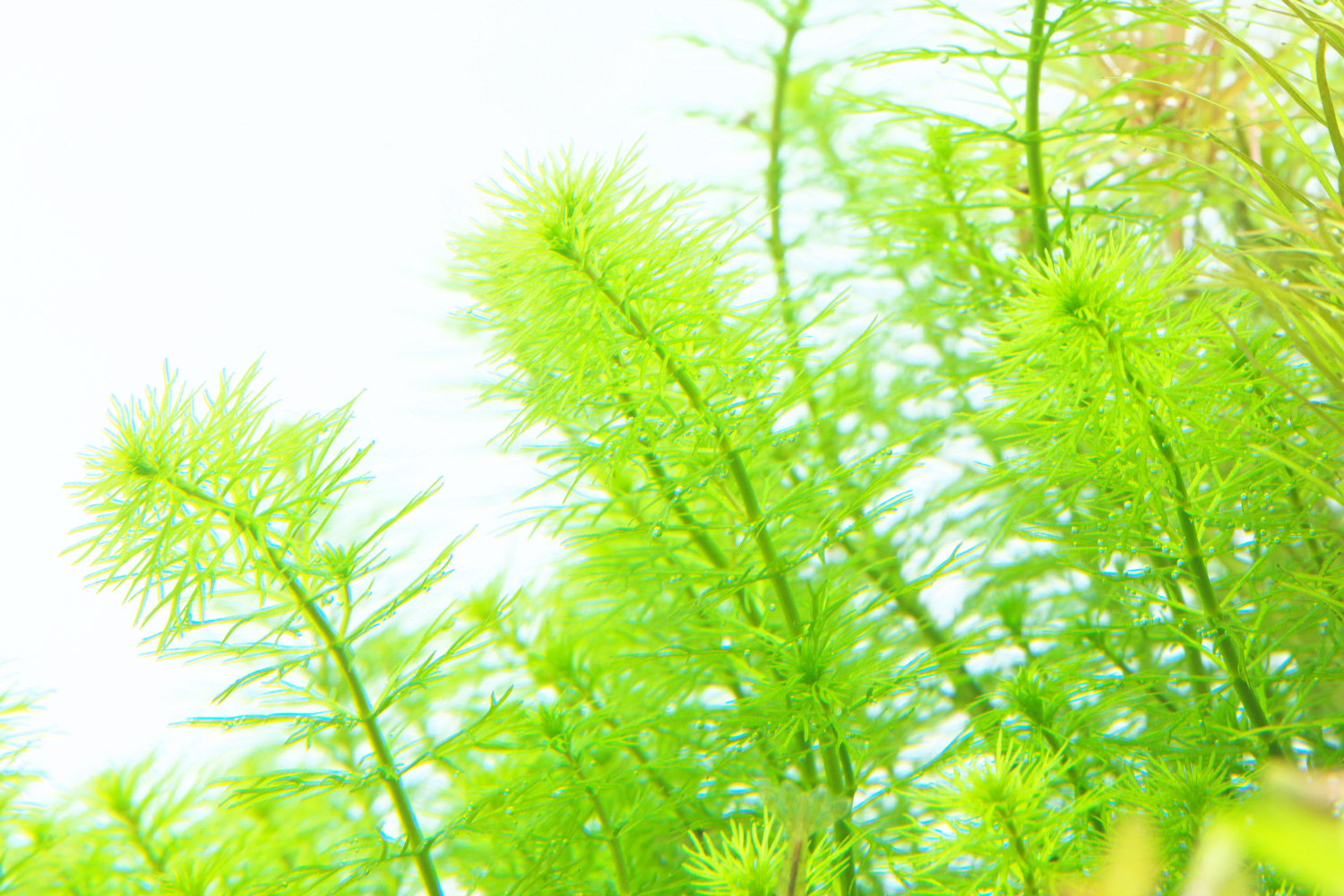
Myriophyllum sp. ‘Guyana’
A small stem plant that grows relatively slowly and is easy to handle in the mid-ground. The dense growth of fine leaves is a sight to behold.
A small stem plant that grows relatively slowly and is easy to handle in the mid-ground. The dense growth of fine leaves is a sight to behold.
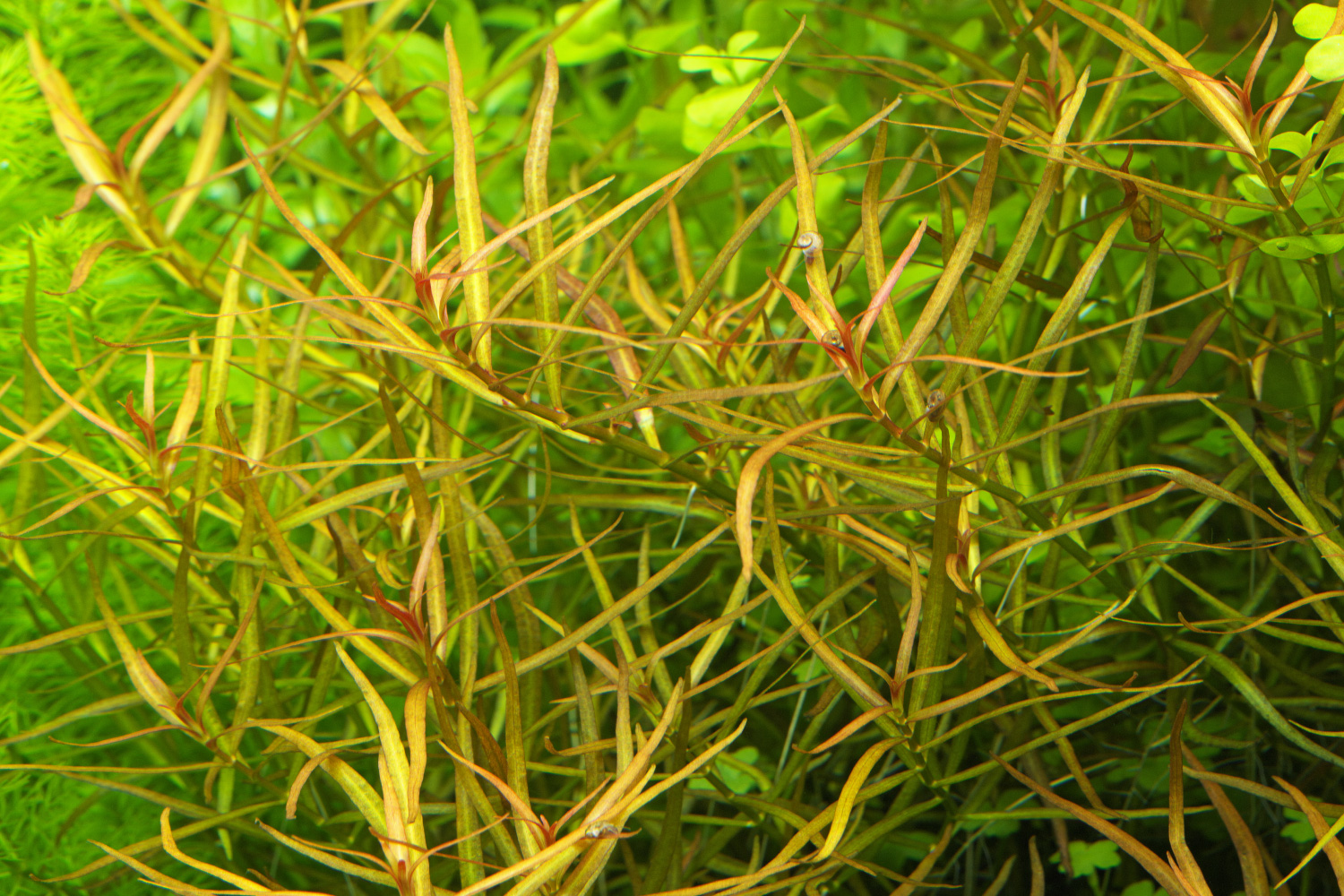
Ludwigia arcuata
The distinctive needle-shaped reddish leaves accentuate the color and shape in a cluster. Recommended for use in combination with other species.
The distinctive needle-shaped reddish leaves accentuate the color and shape in a cluster. Recommended for use in combination with other species.
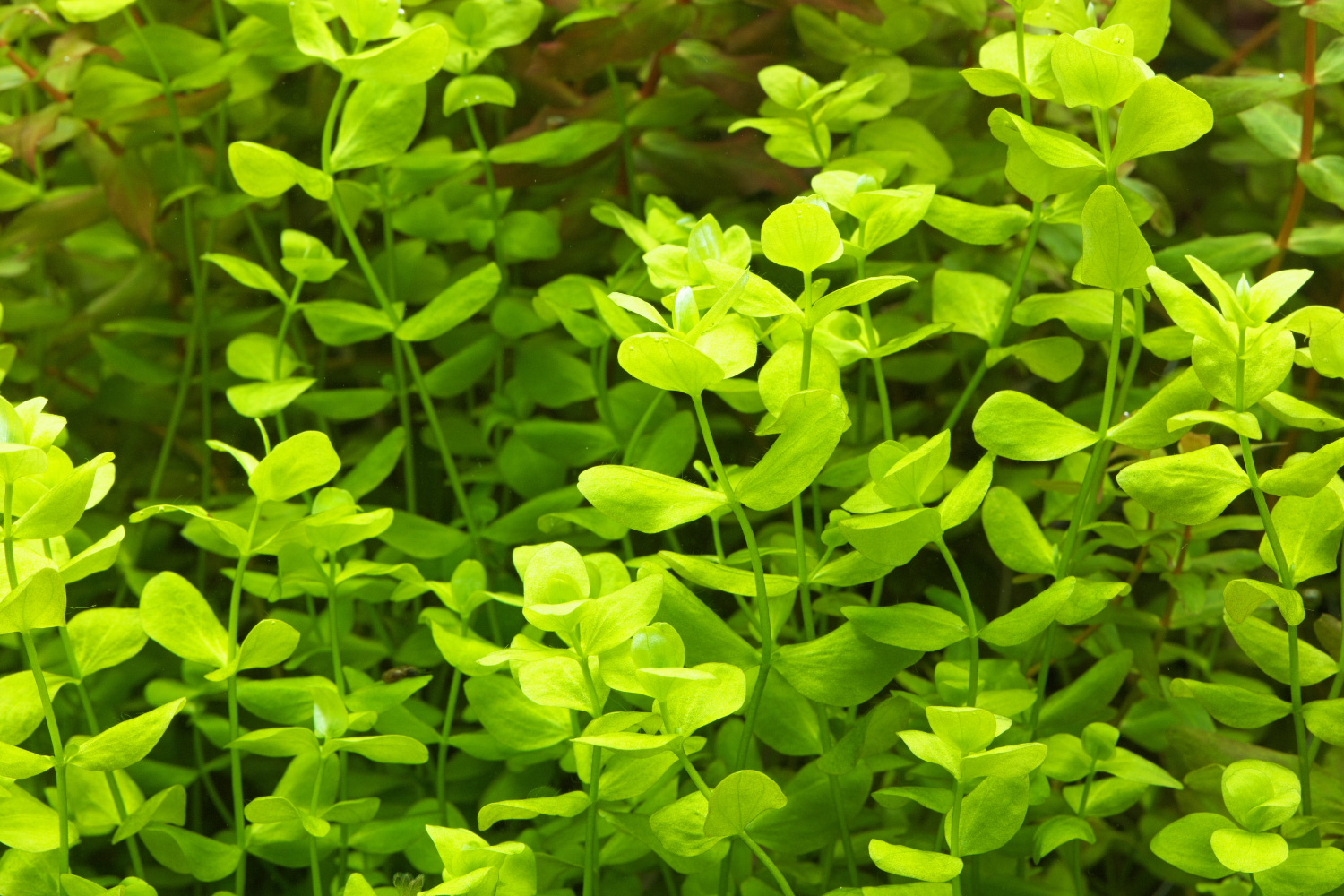
Micranthemum unbrosum
Because it grows quickly and upward, the lower stem tends to age easily. To maintain it for a long period of time, re-planting is necessary.
Because it grows quickly and upward, the lower stem tends to age easily. To maintain it for a long period of time, re-planting is necessary.
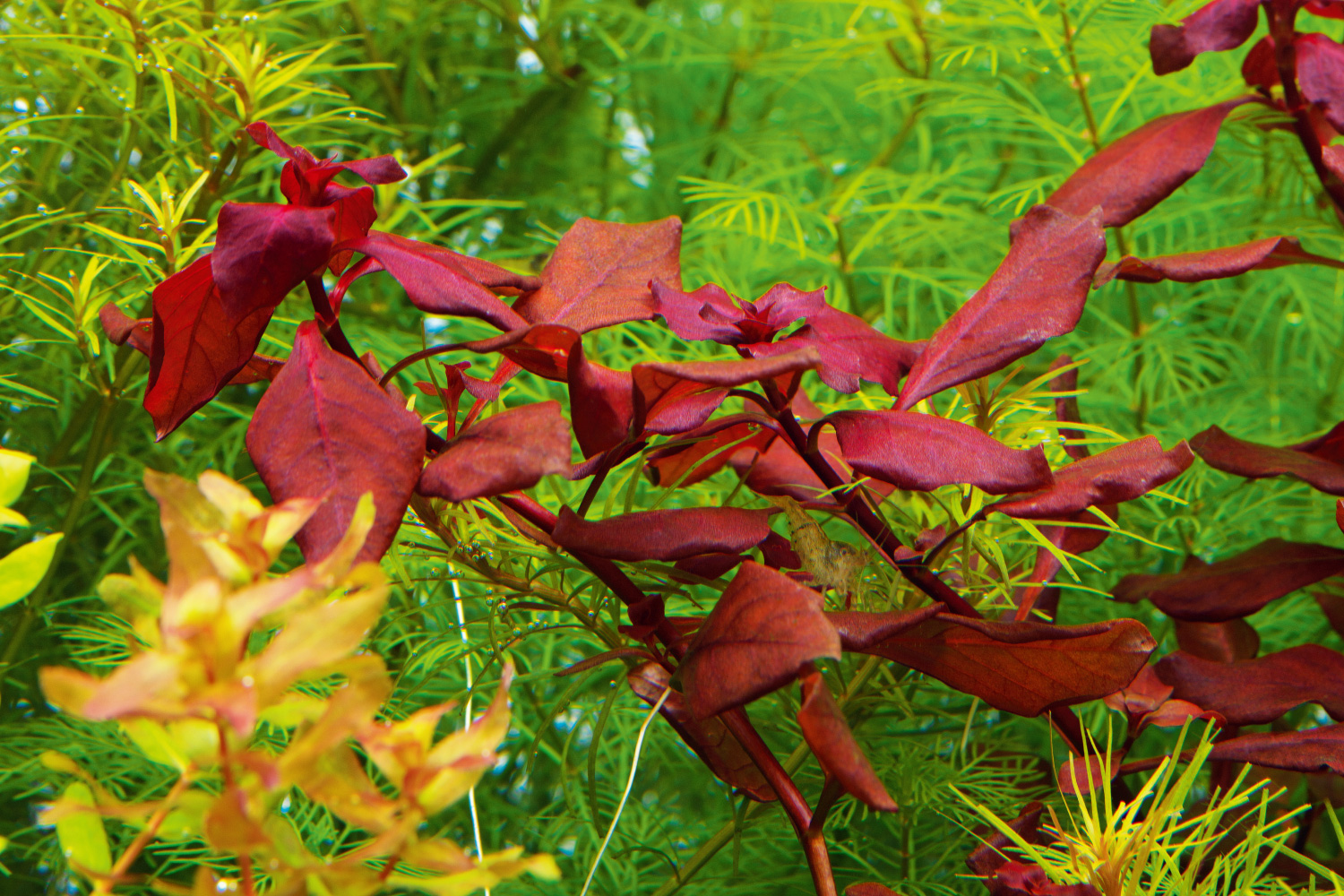
Ludwigia repens ‘Super Red’
Light and iron are important for the deep red color like shrimp color. Although beautiful in clusters, they also serve as a divider between the mid-ground and the background in this aquascape .
Light and iron are important for the deep red color like shrimp color. Although beautiful in clusters, they also serve as a divider between the mid-ground and the background in this aquascape .
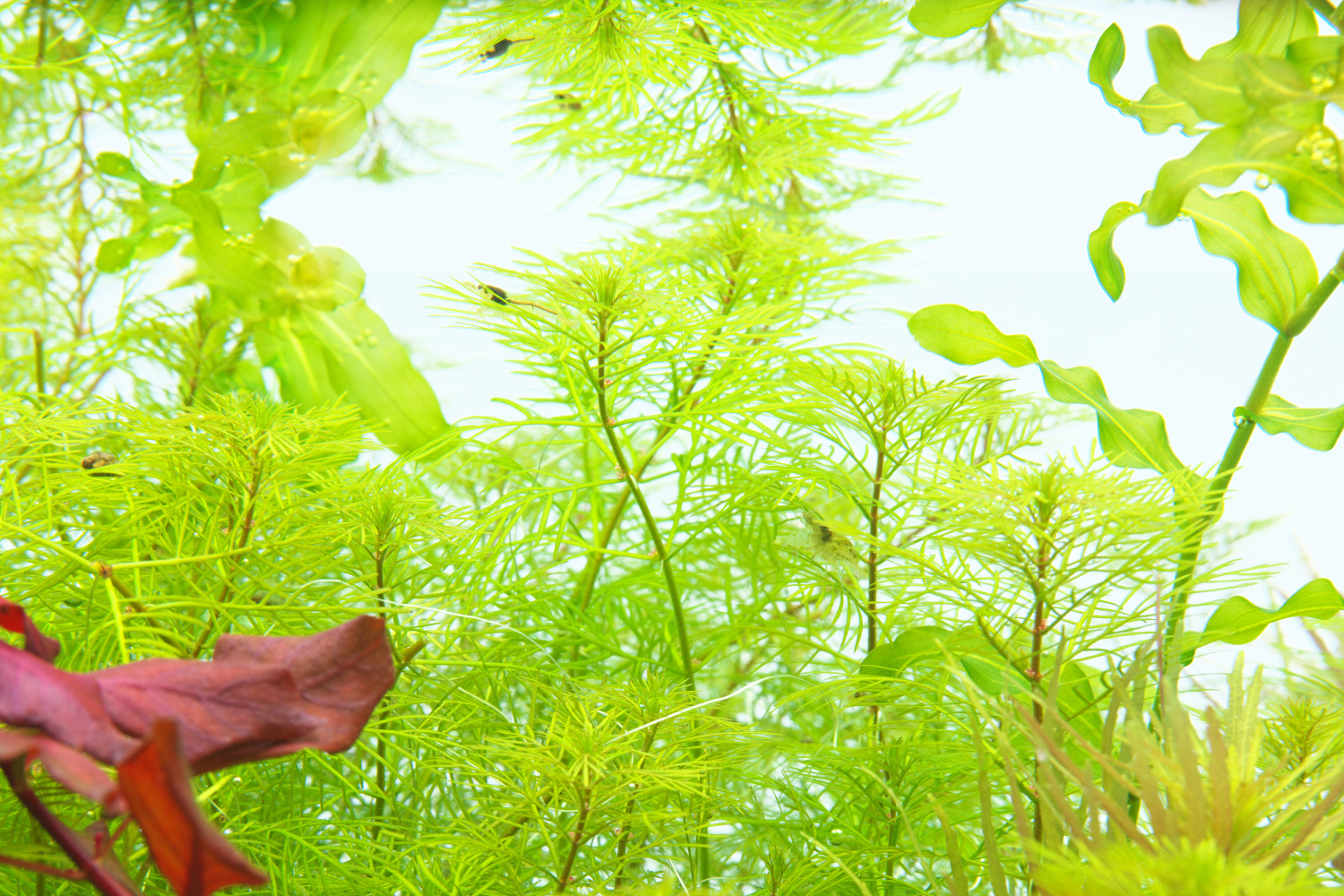
Myriophyllum matogrossense
It grows laterally in an oblique manner. Proper trimming is effective to avoid overgrowth for beautiful cluster formation.
It grows laterally in an oblique manner. Proper trimming is effective to avoid overgrowth for beautiful cluster formation.
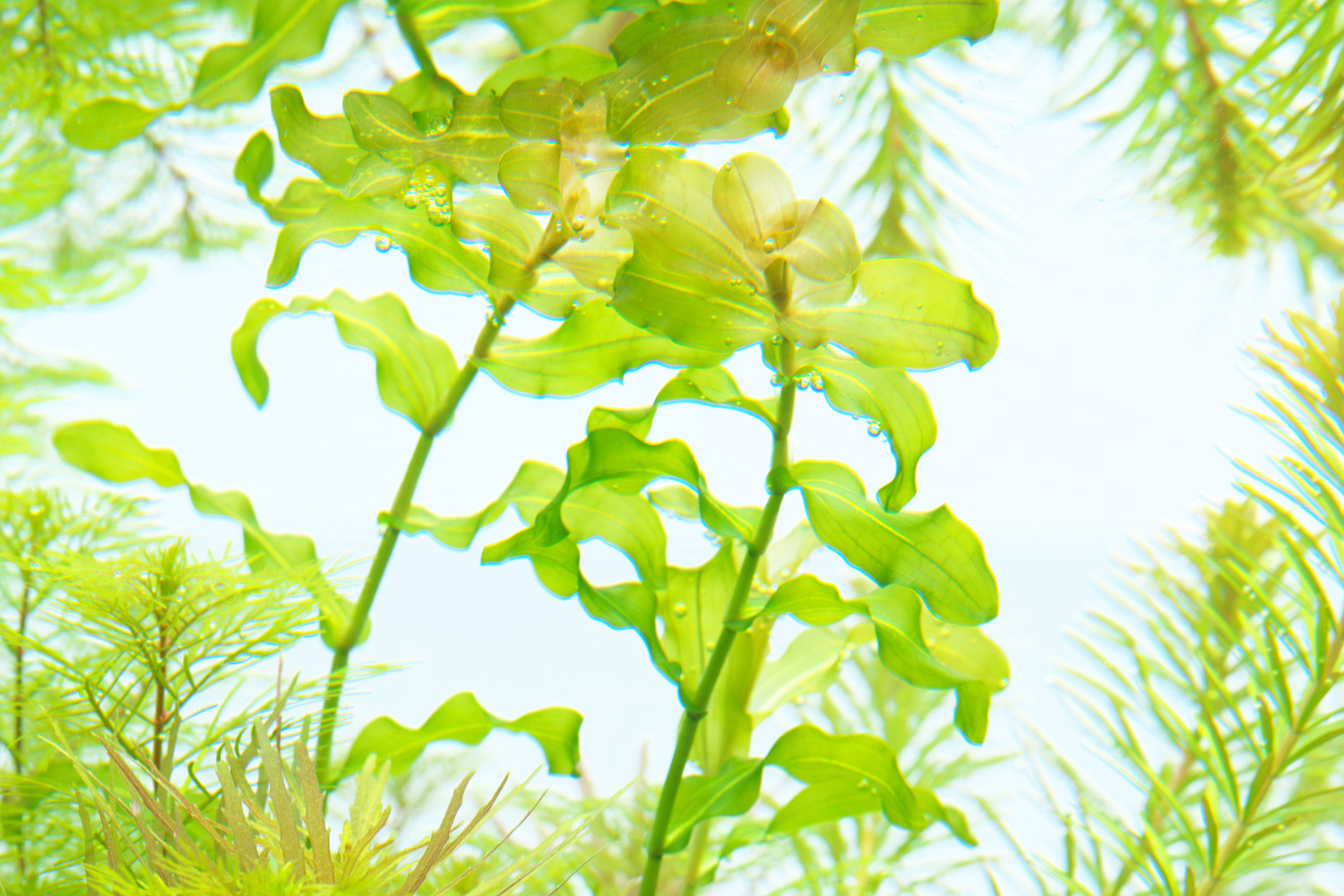
Potamogeton perfoliatus
Cellophane-like transparency creates depth and water flow. When mixing it with other plants, try to plant more in the beginning so as not to be outcompeted by other aquatic plants.
Cellophane-like transparency creates depth and water flow. When mixing it with other plants, try to plant more in the beginning so as not to be outcompeted by other aquatic plants.
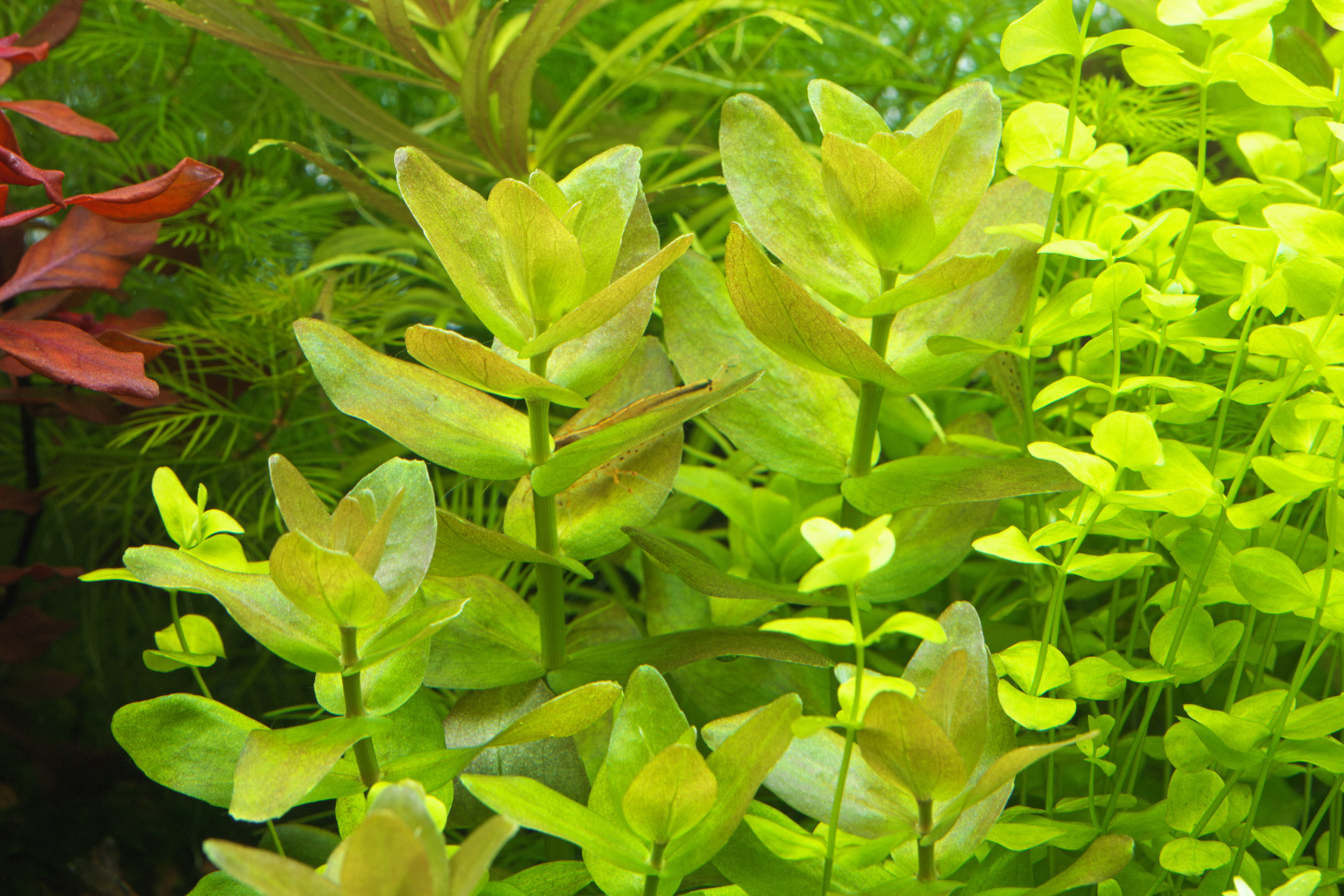
Bacopa caroliniana
It is characterized by its strong and thick leaves. In this aquascape, the diversity was expressed by reducing the number of plants and scattering them around.
It is characterized by its strong and thick leaves. In this aquascape, the diversity was expressed by reducing the number of plants and scattering them around.
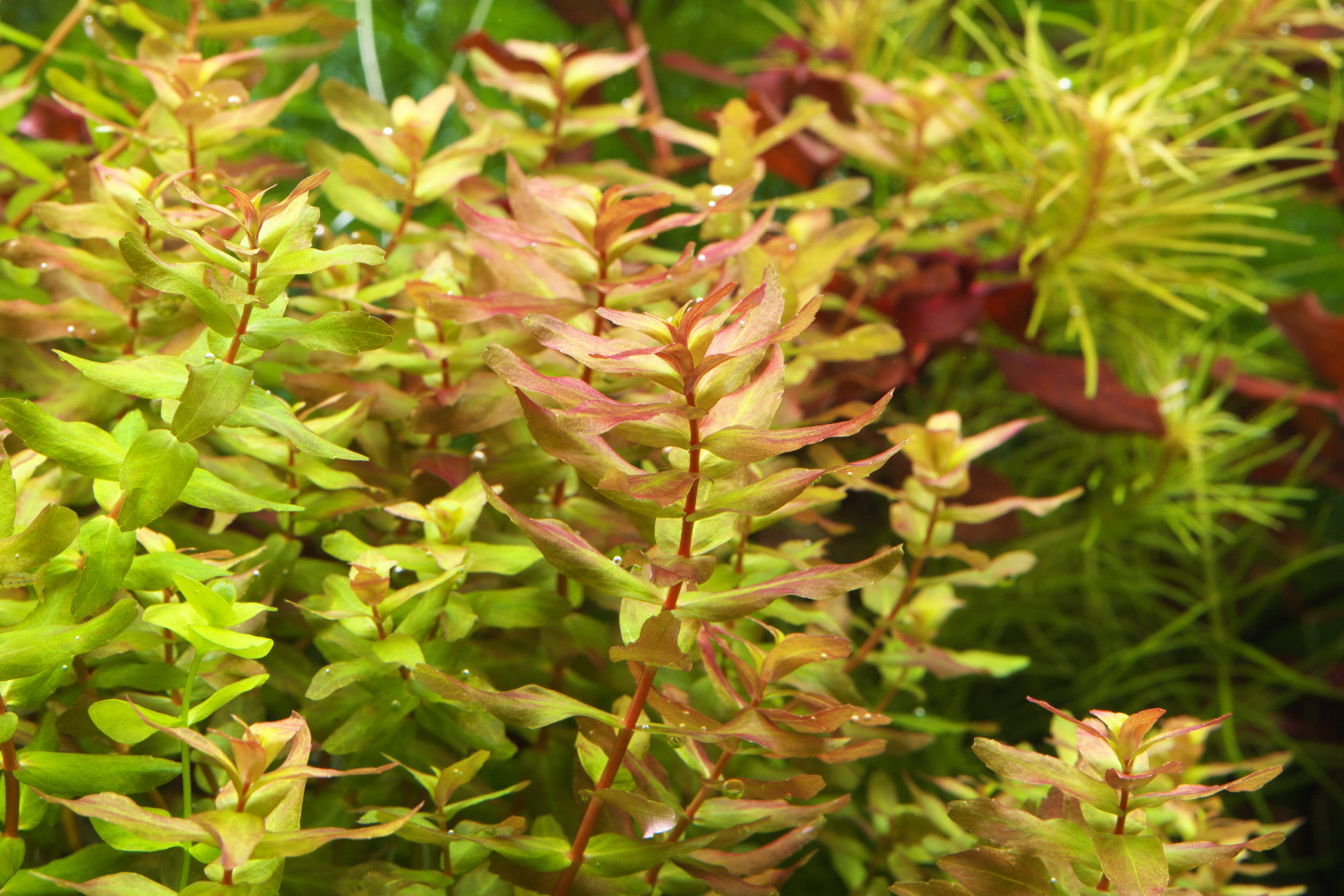
Rotala macrandra ‘Green’
Beautiful leaves with a color gradation from green to red give a pale, soft impression. Sufficient light and a supply of iron in addition to CO2 are essential.
Beautiful leaves with a color gradation from green to red give a pale, soft impression. Sufficient light and a supply of iron in addition to CO2 are essential.
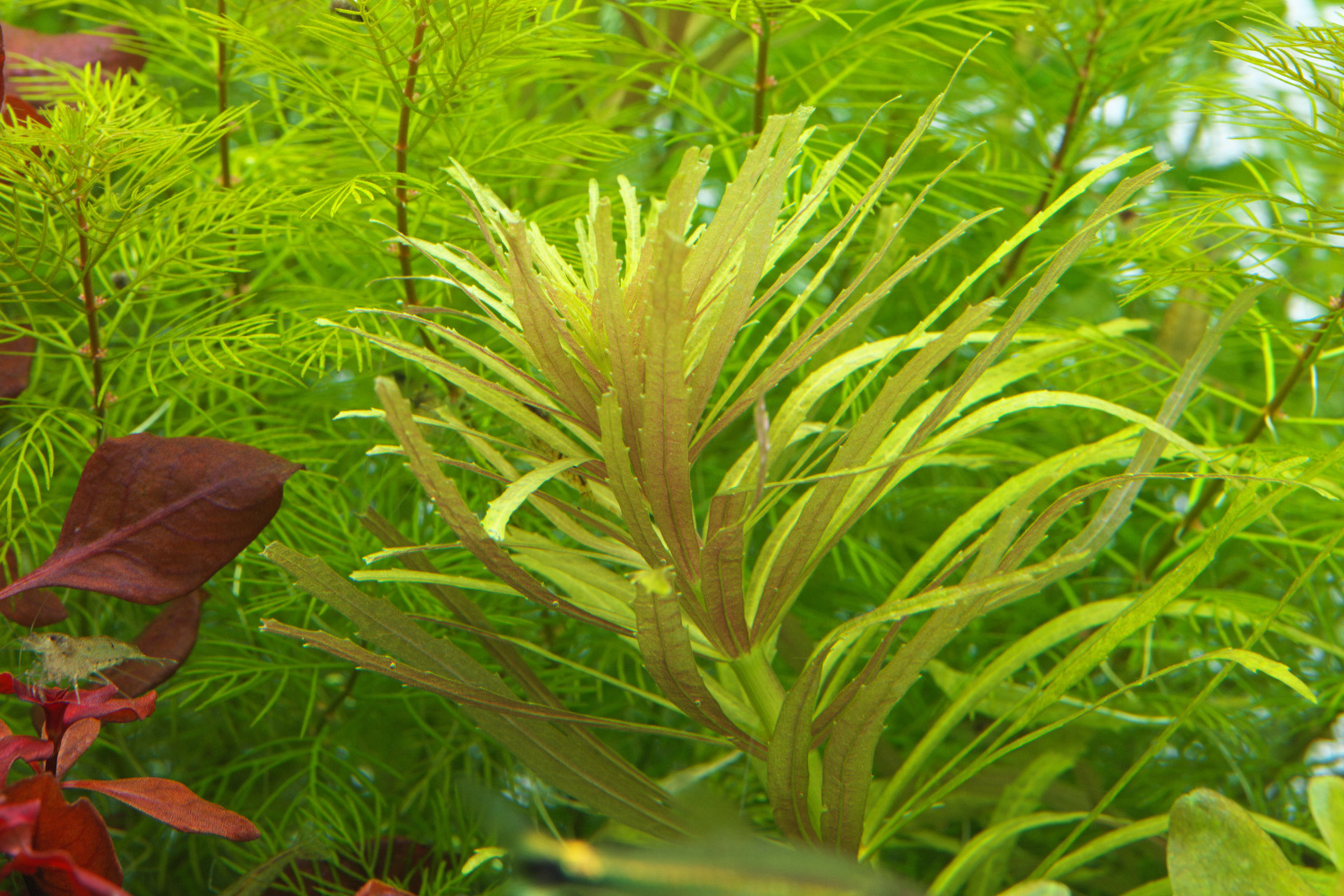
Limnophila hippuridoides
It has slender leaves with rather large stems. Planting it among small stem plants gives sharpness to the cluster.
It has slender leaves with rather large stems. Planting it among small stem plants gives sharpness to the cluster.
![[ STYLE OF EPIPHYTIC PLANTS ] Effective use of epiphytic aquatic plants in layout scenes](https://www.adana.co.jp/wp-content/uploads/sites/3/2024/04/ep_img_ogp.jpg)
